






Reflecting changing times and legislation, Americans are now more apt to light up a joint or pop a weed gummy on a daily basis than they are to raise a glass of wine or beer, new research shows.
Among folks who said they used either marijuana or alcohol each day, marijuana became the preferred choice as of 2022, according to study author Jonathan Caulkins.
In terms of the sheer number of people who drink or use pot or alcohol at least occasionally, alcohol remains in the lead.
However, "a good 40% of current cannabis users are using it daily or near daily, a pattern that is more

associated with tobacco use than typical alcohol use,” Caulkins told the Associated Press. He's a cannabis policy researcher at Carnegie Mellon University in Pittsburgh.
The new study, published May 22 in the journal Addiction, was based on an analysis of the National Survey on Drug Use and Health which, among other behaviors, tracks tobacco, alcohol and drug use in the United States.
For years, alcohol topped marijuana as the substance of choice among "daily users." But in 2022, 17.7 million people told the survey they ingested marijuana on a daily or near-daily basis, compared to 14.7
million who did so with alcohol.
That's not overly surprising, since rates of daily or near-daily marijuana use rose 15-fold among Americans between 1992 and 2022, Caulkins noted.
It also reflects big changes in public policy, with most states relaxing laws against the use of marijuana, although it's still illegal at the federal level.
The federal government announced earlier this month that it has moved to reclassify marijuana as a less hazardous drug.
Still, having more Americans using marijuana each day isn't necessarily a good thing, one expert said.
Speaking to the AP, Dr. David Gorelick, a psychiatry professor at the University of Maryland School of Medicine, believes far too many people are now reaching problematic levels of weed use.
"High frequency use also increases the risk of developing cannabis-associated psychosis,” a severe condition where a person loses touch with reality, he added.
One study published earlier this week in the journal Psychological Medicine, found that teens are at especially high risk for psychosis, with risks rising 11-fold if they regularly use marijuana.

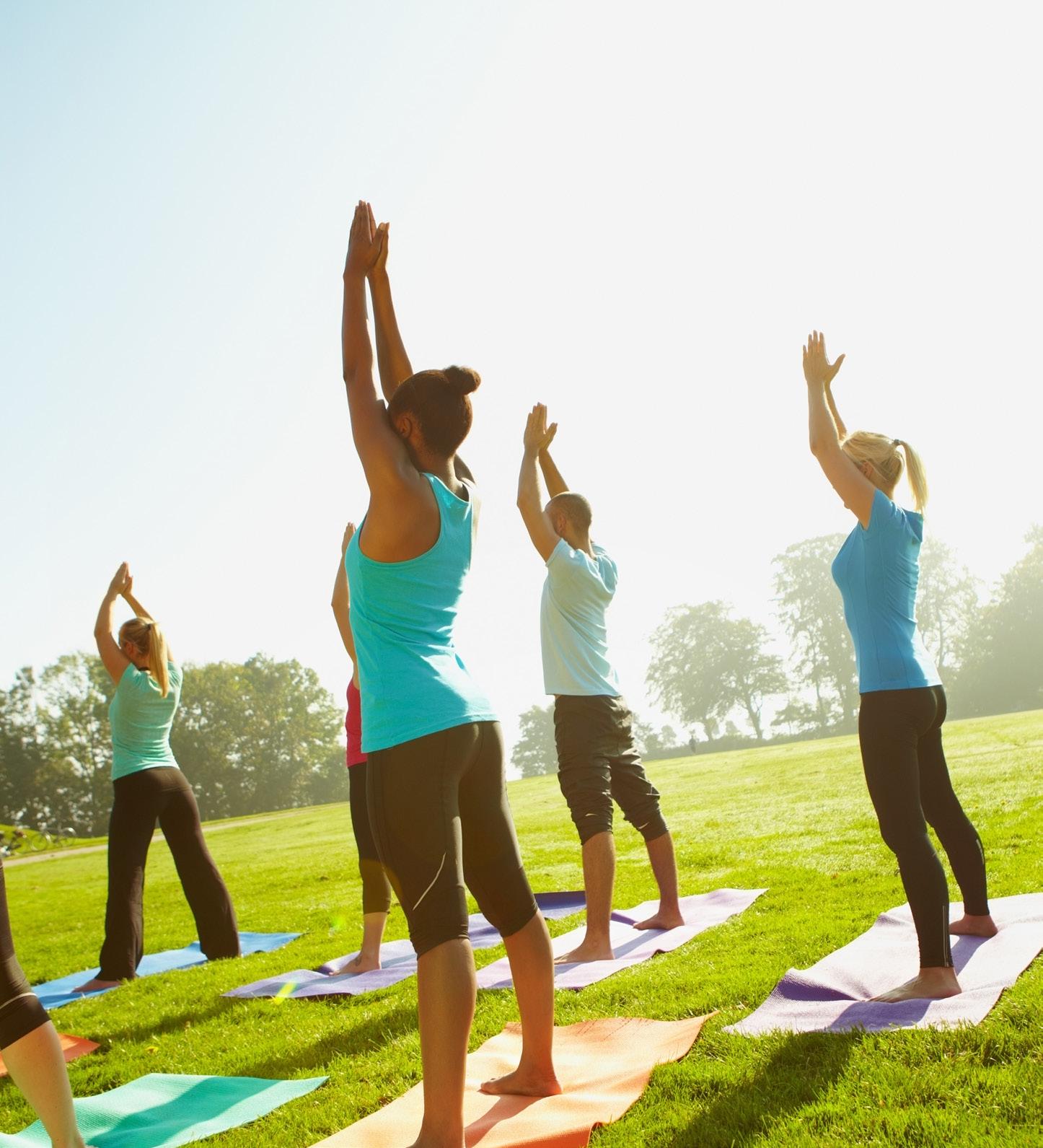
Nearly one in every six U.S. adults have engaged in the ancient practice of yoga over the past year, new government data shows.
In fact, as Americans increasingly turn to alternative or complementary health approaches, "the largest increases [have been] in the practice of yoga," noted researchers Nazik Elgaddal and Julie Weeks. They're with the National Center for Health Statistics (NCHS), which is part of the U.S. Centers for Disease Control and Prevention.
Their new report is based on 2022 data from the ongoing National Health Interview Survey.
According to the data, yoga remains more popular among women (23.3% reporting past-year use) than men (10.3%).
It's also more popular among the young (ages 18 to 44), with 21.3% in that age group saying they practiced yoga, than the middle-aged (14.1%) or those aged 65 or older (8%).
The well-off are also more likely to engage in yoga than less affluent folks. Overall, 23% of people in the
survey's highest income bracket said they practiced yoga versus 10.4% of those at the lowest income level.
As to why Americans are engaging in the ages-old Indian practice, about 80% of yoga practitioners cited "restoring overall health," the CDC team found. That was especially true for folks aged 45 to 64.
Meditation is often being performed in conjunction with yoga: Just over 57% of all practitioners said they meditated as part of yoga practice. Lower-income people were more likely to engage in meditation and yoga together compared to better-off folks, the data showed.
Pain relief was another reason cited by many who practiced yoga: About 29% said they engaged in yoga to help "treat or manage pain," the survey found.
Again, lower-income people who engaged in yoga were more likely to say that they used the practice to ease pain compared to higher-income people.
The findings were published June 12 as an NCHS Data Brief.
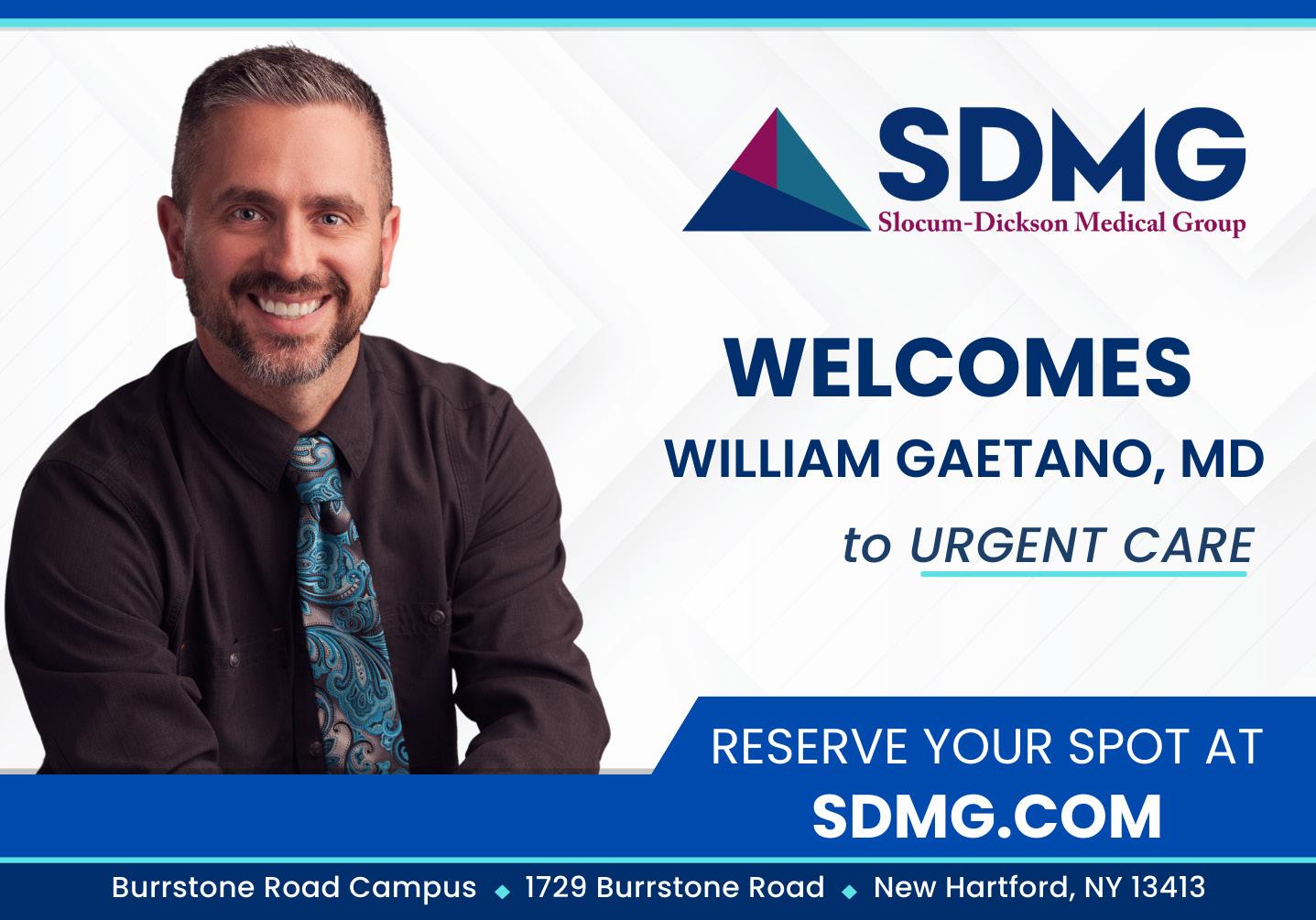
monthly newspaper published by Local News, Inc. 20,000 copies distributed. To request home delivery ($21 per year), call 315-749-7070.
Good Health is published 12 times a year by Local News, Inc. © 2024 by Local News, Inc. All rights reserved. 4 Riverside Drive, Suite 251, Utica, NY 13502 Phone: 315-749-7070 • Email: IGHmohawkvalley@gmail.com
Editor & Publisher: Wagner Dotto • Associate Editor: Stefan Yablonski
Contributing Writers: Barbara Pierce, Deb Dittner, Gwenn Voelckers, David Podos, Deborah Jeanne Sergeant, Anne Palumbo
Advertising: Amy Gagliano: 315-402-3370 • Email: amyIGHmv@gmail.com
Layout & Design: Angel Campos-Toro • Office Manager: Allison Lockwood


By George W. Chapman
The mental health crisis within a crisis is the impact of a family member undergoing a mental health issue on their family. A 2022 study conducted jointly by the Kaiser Family Foundation and CNN found 90% of respondents believe we are in a mental health crisis in our country. Access and cost are the two largest barriers facing patients and their families. A family in crisis could involve a family member living on
As the election looms ever closer, once again the Affordable Care Act is a political football. Ignorantly proclaiming “the ACA is terrible healthcare,” some political leaders denigrate all the insurance companies, physicians, nurses and hospitals that pay for or provide the care to more than 45 million patients. Since the genesis of the ACA in 2010, the number of uninsured has been cut in half from 15% to just more than 7%. Most of those covered by the ACA qualified via expanded Medicaid coverage in their state. (For example, the threshold to qualify for Medicaid was raised from earning less than $12,000 a year to earning less than $15,000 a year.) For those that earn more than the threshold, up to 400%, they can purchase a commercial plan online at discounted rates based on their income. The federal government reimburses the participating insurance plans for the balance of the full premium. The subsidy runs around $1 billion annually. There is now record commercial insurance company participation, averaging six companies per ACA market. The ACA did not just impact the under or uninsured. For ALL of us, you cannot

the streets, a family member institutionalized because a threat to self or others, a family member overdosed or attempted suicide. The support available to families is just as lacking as the support for the family member in need of treatment. The survey of families in crisis revealed 28% had a family member institutionalized; 21% had a member in an emergency department for an overdose; 14% had a member living on the street; 16%
be denied coverage by any carrier for a preexisting condition. Plans cannot charge higher premiums if you had what was once considered a preexisting condition. Plans cannot impose lifetime limits for an illness. The ACA limited out-of-pocket costs and required carriers to offer preventive care without any out-of-pocket costs to the member. Families can keep their children on their plans up to age 26. The ACA made it far easier for consumers and businesses to compare plans. Bronze, Silver and Platinum levels of insurance must meet basic coverage requirements. (Most covered by employer sponsored insurance are in Silver plan.) Insures cannot discriminate against small businesses. Finally, insurers must spend at least 85% of their premiums collected on claims. If they spend less than 85%, it must be rebated to the employer. This prevents price gouging by the carriers.
In 2022, 48,000 of us were killed by guns, half by suicide. That’s about 132 gun deaths a day. The leading cause of death among children and teens is ... guns. To develop an effective prevention and
said a member was homeless; 8% had a member with an eating disorder; 20% reported a family member with cutting or self-harm behavior; 16% reported a member had attempted suicide; 50% of the families reported one or more of the above; 40% said the member crisis had a major negative impact of family relations; 57% of the families surveyed had incomes less than $40,000 while 43% had incomes more than $90,000.
counseling program, the government needs better data from hospitals, emergency rooms and physicians regarding gun related injuries and deaths. Hospitals will receive extra funding for compiling and reporting the data which has yet to be determined. (The data collection will not reveal names.) Even funding for just studying gun violence is a political football in Congress. A scant $25 million had been earmarked for the study. By comparison, three times that amount is earmarked to study teenage drinking.
The impact and harm of that record-breaking breach a couple of months ago at United Health’s claims clearinghouse, “Change Health,” is still being felt. It disrupted almost HALF of all claims filed by physicians, hospitals and pharmacies. Consequently, the DHHS office of civil rights is allowing affected providers to require United Health to notify their patients of their data that was stolen.

MA plans are offered by commercial carriers as an alternative
to traditional Medicare. Seniors are enticed to enroll by expanded benefits (preventive services, dental, vision and even free gym membership) without an increase in their premiums or what is deducted from their monthly social security check. The concept makes a lot of sense. By offering these extra benefits, MA plans expect that their seniors will be healthier, which reduces future claims. So, the investment in the extra benefits offered to seniors by MA plans will be recouped down the road. More than half of all seniors, about 33 million, have opted for MA plan. Initially, MA plans were covering “younger” or “less risky” seniors (65-70) who still didn’t require a lot of medical services. Commercial profits were good and they couldn’t enroll savvy seniors fast enough. However, those “younger” seniors are now in their 70s and 80s and here come the claims. According to some MA plans, profits are declining. Consequently, they are increasing denials and slowing the approval process. Providers and health systems aren’t standing for this, so many are threatening to refuse participation and accept only traditional Medicare. This could in turn force many MA members back to traditional Medicare, especially if their favorite providers drop their MA plan. MA plans are paid for each member enrolled by CMS, which also runs traditional Medicare. To entice commercial plans, CMS offered an enhanced premium to cover startup costs. So initially, things were running well for these plans. These enhanced MA plans cost CMS about $5,700 year per enrollee versus about $5,000 per traditional Medicare enrollee. Industry experts believe that, despite the kvetching, most MA plans will hang in despite lower profits and will adjust.
The national association that represents skilled nursing facilities is suing CMS over unreasonable staffing requirements that will be harmful to patients and financially untenable. The association argues the staffing requirements are a knee jerk reaction to the nursing home deaths during the pandemic. While a quarter of COVID-19 related deaths occurred in SNFs, the frail elderly were generally acknowledged to be most at risk, no matter if at home or in an SNF. The mandated staffing requirements are NOT supported financially via enhanced reimbursement from either Medicare or Medicaid. Hundreds of financially strapped SNFs could close unless there is some sort of compromise.
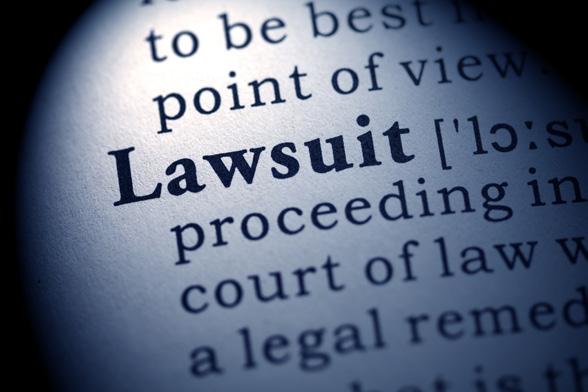


George W. Chapman is a healthcare business consultant who works exclusively with physicians, hospitals and healthcare organizations. He operates GW Chapman Consulting based in Syracuse. Email him at gwc@gwchapmanconsulting.com.
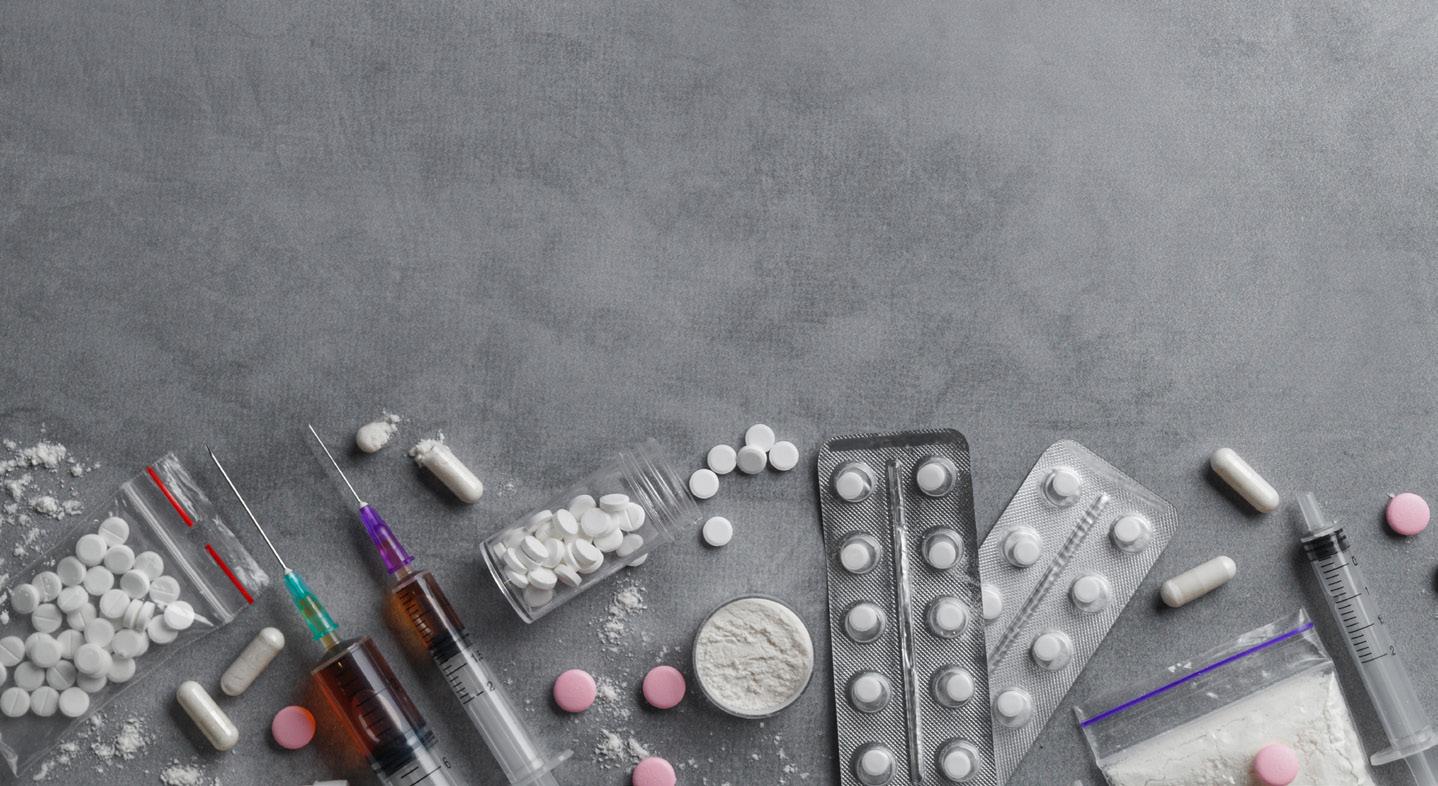
The relentless rise in deaths from drug overdose in the United States may finally have stalled: New data from 2023 show the first decline in such deaths since 2018.
"Statistics indicate there were an estimated 107,543 drug overdose deaths in the United States during 2023 — a decrease of 3% from the 111,029 deaths estimated in 2022," CDC statisticians wrote.
They released the new numbers May 15 as a data presentation from the CDC's National Vital Statistics System.
An epidemic of addiction to prescription opioids like OxyContin, along with the introduction of lethal additives to street drugs such as fentanyl or xylazine has spurred a steady rise in drug-related deaths.
But the new 2023 numbers, though still incomplete, could give Americans a glimmer of hope.
fell slightly in 2023. That included overdoses linked to opioids, which declined from 84,181 in 2022 to 81,083 in 2023, the CDC said.
But the good news wasn't spread equally. Some states (Nebraska, Kansas, Indiana and Maine ) saw declines in fatal ODs of 15% or more in 2023, while others (Alaska, Washington, and Oregon ) charted big increases.
And while fewer people died in overdoses involving synthetic opioids (primarily fentanyl), the rate of fatal overdoses involving cocaine and psychostimulants (such as methamphetamine) actually rose in 2023, the CDC said.
However, overall, "this is the first annual decrease in drug overdose deaths since 2018," the CDC noted.
Overall, fatal drug overdoses
Still, the agency stressed that the 2023 data is "incomplete and subject to change as more 2023 data are submitted to the National Vital Statistics System."

We’re in your corner in the fight against breast cancer.
As someone who deals directly with breast cancer patients – and as a cancer survivor herself – AnnMarie Gianno, from CancerConnects, has seen first-hand the positive impact Saint Agatha Foundation’s support has on CNY breast cancer patients. By helping with unmet financial needs – like transportation costs, co-pays, specialized garments, and much more – the CancerConnects/ Saint Agatha Foundation partnership helps alleviate financial strains for those already fighting a breast cancer diagnosis. If your medical or non-medical organization would like to provide financial support to CNY breast cancer patients, too – visit s saintagathafoundation org/ for-providers to learn more and watch an interview with AnnMarie. New provider partners are always welcome!

saintagathafoundation.org

AnnMarie Gianno Patient Program Coordinator, CancerConnects


By Gwenn Voelckers
When the challenges of living alone and the troubles of the world overwhelm you, the quote below by Mother Teresa may give you hope and a renewed focus on living a life of love, service and charity.
“Not all of us can do great things. But we can do small things with great love.”
Mother Teresa
In Mother Teresa’s long life, she touched millions through her presence and acts of charity. My interest in her was piqued in 1979 when she won the Nobel Peace Prize for her dedication to the poor and work to promote peace.
I was 25 at the time. She donated her entire cash prize to the poor in India.
In her words and especially in her actions, she helped me see that a life of generosity and everyday kindness — however big or small, anonymous or acknowledged — is meaningful and powerful.
As we navigate life’s later stages as older adults, it’s helpful to remember that our actions, no matter how small, can profoundly impact others as well as our own sense of well-being.
Below are 10 examples of simple yet meaningful gestures that can bring joy, peace, laughter and a deeper understanding to those around us:
1. Express your love
In her twilight years, my mother wrote beautiful, heartfelt letters to each of her children: to me and my three siblings. Unbeknownst to us, she tucked the letters away for safe keeping.
After her passing in 2014, we discovered her letters — personalized and crafted to celebrate each of our unique attributes.
I cherish her letter and keep it close at hand in my bedside stand.
In my mother’s eyes, these letters might have been a small token of her
affection, but her words held immeasurable worth to each one of us.
2. Offer a helping hand
I recently witnessed neighbors helping neighbors after high winds sent our trash bins sprawling in all directions.
I joined “the party” and as we were raking up the bits and pieces, our local trash collector showed up with a big box of doughnuts.
Many hands, many smiles and lots of cream-filled delights!
3. Do good on top of good (including baked goods!)
My sister volunteers at Tool Thrift Shop in Fairport, whose proceeds benefit the elderly.
But she does more than staff the cash register; she brings in goodies for her co-workers and treats them to healthy black-bean brownies — a small, but welcome (and tasty!) gesture.
Here’s an example of a small act that gathered momentum during COVID: the act of leaving uplifting notes in public spaces.
On my morning walks I often happen upon painted stones with inspirational messages created by children. I take photos of my favorites and text them to my friends, creating a ripple effect.
Some of my fondest expressions are “Look for the beauty around you.” “Good things take time.” “Just breathe.”
While it was my full intention to attend the funeral service, I was tempted to skip it.
I know that sounds terrible, but I had gardens to plant. And it turned out to be a gorgeous day. There was so much to do.
But then, I re-read the obituary, noted the time and place of the service and powdered my nose.
I’m so glad I made the right decision. I went to the service.
I’ll never again underestimate the value of showing up. What I initially rationalized to be inconsequential was very consequential.
I felt the warm embrace of those grieving for their mother and was so grateful to be a source of strength and solace during a difficult time. Show up. It matters.
Have you read the book titled, Miss Rumphius about the real-life “Lupine Lady” who scattered lupine seeds everywhere she went?
The plentiful and colorful lupines that adorn the coast of Maine are her legacy.
We can all be “Lupine Ladies.”
Anonymously leave a bouquet of flowers on your neighbor’s doorstep. Plant a garden on the perimeter of your property for passersby to enjoy, even if you can’t see the garden from your house. Or create a charming container mini-garden for your friend in their apartment.
Small seeds can produce an abundant harvest on so many levels!
Don’t you just love it when people freely share their favorite books, brands, recipes, movies, music and restaurants, not to mention their knowledge and expertise.
This simple and generous act of helping others by exchanging “trade secrets” can save everyone time, trouble, and money.
I have a dear friend who, like me, is an avid reader. We trust each other’s book recommendations and reap the rewards.
Next up? A Gentleman in Moscow.
Openly sharing information can foster connections, promote conversation, self-reflection, and understanding.
Literally, in this case, making monetary donations — no matter the size — can help support people in need and global causes that make a positive difference in our world.
Whether you contribute pennies to the Salvation Army’s Holiday Kettle campaign, make donations to
your favorite charity, or contribute outright to a struggling family, you empower yourself to be a part of a solution, promoting change and funding a better future.
Every little bit counts.
9. Vote
Yes, voting — a small (but huge) act and privilege. Easy to do. And so impactful.
Ultimately, voting is not just about individual preferences, but about expressing our love and concern for the greater good, making it a powerful and compassionate singular step with profound effects.
Perhaps one of the smallest, quietest and most loving thing we can do is to listen to each other with intention and open hearts.
Many consider “active” listening to be one of the highest forms of respect. And it costs nothing.
Offering a listening ear to someone in need, whether a family member, friend or stranger, can help relieve suffering, brighten a mood, deepen an understanding, and enable someone to feel “heard.”
I know my readers hear me.
For those living alone and who may be grappling with feelings of loneliness or questioning their purpose, embracing these small acts can help restore a sense of self-worth and connection.
When we contribute to the happiness, safety, and health of others, we rediscover our value and recognize that our lives matter.
By focusing on doing small things with great love, we can not only enhance the lives of others, but also enrich our own lives with a deep sense of purpose and fulfillment.
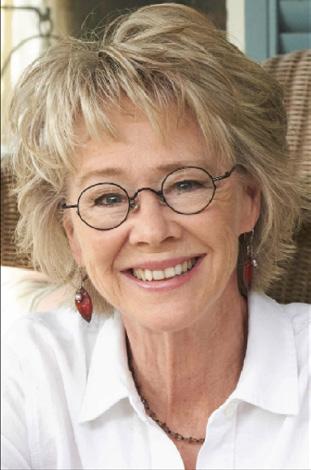
Gwenn Voelckers is the author of “Alone and Content: Inspiring, empowering essays to help divorced and widowed women feel whole and complete on their own.” She welcomes your thoughts on this column as well as topic suggestion for future essays at gvoelckers@rochester. rr.com.
I
f your child is among the youngest in their school grade, it's more likely they'll be mistakenly identi-
fied by teachers as having ADHD or autism, a new study confirms. "Adults involved in identifying
or raising concerns over a child's behavior — such as parents and teachers — may be inadvertently misattributing relative immaturity as symptoms of ADHD," explained senior study author Kapil Sayal, a professor of child and adolescent psychiatry at the University of Nottingham, in England.
"The child's age in relation to their classmates [their 'relative' age] needs to considered when making this kind of diagnosis," he said in a university news release.
It's a phenomenon that's been picked up on in prior studies. This time, Sayal's team conducted what's known as a "meta-analysis," combining the collected data on the issue from 32 studies conducted worldwide.
They found that "children who are younger relative to their peers within the same school year are 38% more likely to receive an ADHD diagnosis and 28% more likely to be prescribed ADHD medications," compared to older kids in the same class.
When it came to autism spectrum disorders (ASDs), similar trends emerged. In two "high-quality" studies conducted in Taiwan, "children who were the youngest in their school year were more likely to be diagnosed with ASD than those who were the eldest," Sayal and colleagues found.
The meta-analysis was published recently in the journal European Child & Adolescent Psychiatry.

Leader at Giotto Center’s Community Health and Behavioral Services talks about how the group helps those with mental, substance abuse issues and why the organization is consolidating its services
David L. Podos
Q: What is the Giotto Center?
A: This is our outpatient behavioral health care clinic serving individuals primarily in Oneida County, but certainly serving individuals outside of Oneida County as well. We work with people who are experiencing mental health concerns as well as substance abuse issues and concerns.
Q: This is a fairly new building you have. If I am correct, you had multiple clinic locations in Utica. Talk about this new building and why is it called the Giotto Center?
A: Sure. The Giotto family has been a supporter of United Cerebral Palsy for many years, [UCP has since been renamed as Upstate Caring Partners]. So, this building was just another way for the family to financially continue to support our mission and to have this wonderful building come to reality. We were previously operating out of three different locations in the Utica area before the Giotto Center was built. With three different locations, services became somewhat disjointed. So, the goal of this new building was to bring all of our services under one roof, one location.
Q: What are the main services that the center provides?
A: We work with people with various needs, primarily people with mental health issues and substance abuse issues. We also have case managers that work with our clients in relieving them of social determinants that can be blocking and or delaying their recovery, such as concerns with housing, or transportations issues for example. So, having the appropriate resources and tools in place is a big help in the recovery process.
Q: Your services are for both adults as well as children, is that correct?
A: Yes, while more than 75% of our clients are adults, we do serve children as well and that can be done right here at the Giotto Center, if needed. That being said, we also have several clinics set up at a number of school settings, we are actually in six different schools districts across Oneida and Herkimer counties; that is where the majority of children who we see receive help. These children may be struggling academically and need some guidance. There is also the
‘We
are in six different schools districts across Oneida and Herkimer counties — that is where the majority of children who we see receive help.’
outside of school issues they may be dealing with such as family issues, economic issues, stability in regards to housing, etc.
Q: In regards to the Giotto Center, how many staff do you have?
A: Here at the center, we have 55 staff and that is a combo of full-time as well as part-time staff.
Q: How are you funded?
A: We have both billable services and contractual billing services, as well as a number of grants. We also receive funding from New York State Department of Mental Health and we receive some federal funding.
Q: How does your intake process work?
A: Once we are contacted by someone who is seeking help for themselves and or a family member, we will ask a number of questions so we can assess for any current crisis needs. For example, we want to know if the person is at risk for self-injury and or are they suicidal. The initial contact may be over the phone and or from a walk-in. Once we have an initial assessment, we can then arrange for the most appropriate services that would address their specific needs. We have open access to the public to just come in with no appointment necessary, Monday through Friday, 9 a.m. to 3 p.m. That would be for adults. For children, we have open access on Wednesday and Thursday from 4 to 6 p.m. A pre-screening process will take place, they will also see a clinician to identify why they came in and depending on the need will be assigned a case manager.
n For more information, call 315-798-8868 or visit upstatecp.org.

By Anne Palumbo
Even though Americans eat more potatoes than any other vegetable, a good many of us don’t.
Worried about carbs and calories, we shun this tasty tuber.
Assuming we’re not missing anything anyway, we sail by these perceived starch bombs in the grocery store.

Years ago, I too was a spud-shunner. But then I did some digging and, much to my surprise, discovered multiple studies that linked potatoes and their nutrients to a variety of desirable perks.
Let’s begin with starch. Although potatoes don’t contain as much starch as flours, baked goods or cereals, they do contain more starch than other vegetables. However, unlike the refined starch in processed goods that causes blood sugar to spike and then drop, a potato’s “resistant starch” is not broken down and fully absorbed by the body. Instead, it feeds the “good” bacteria in your gut. Research has linked resistant starch to numerous health benefits, including better blood sugar control and improved gut health.
Red, white or purple, this popular vegetable is surprisingly rich in nutrients.
One serving provides decent amounts of brain-boosting vitamin B6, constipation-preventing fiber, and bone-strengthening manganese. The biggest surprise of all? Potatoes are an excellent source of vitamin C and potassium. A powerful antioxidant that protects cells from disease-forming free radicals, vitamin C supports
the immune system and helps form collagen. Potassium, on the other hand, is a mineral that’s essential for heart health and plays a role in every heartbeat.
Potatoes are packed with antioxidants, compounds that neutralize potentially harmful molecules known as free radicals. When free radicals accumulate, they can increase the risk of chronic diseases like diabetes, heart disease, and cancer. Since the skin of colorful varieties like red and purple potatoes can have up to 12 times more antioxidants than the flesh, I gravitate to those.
Potatoes are quite filling, which means they may help you regulate or lose weight by curbing hunger pangs. Undoctored and simply boiled or roasted, potatoes are not that caloric: 110 calories per average serving. Deep-fry them in oil or smother them with the works, however, and this healthy spud quickly becomes a nutritional dud.
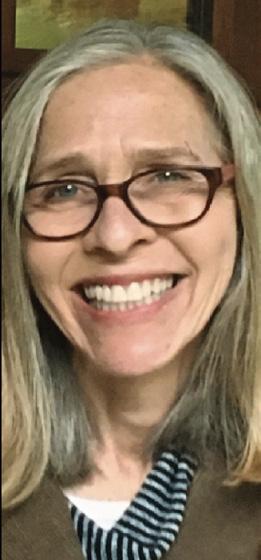
Anne Palumbo is a lifestyle columnist, food guru, and seasoned cook, who has perfected the art of preparing nutritious, calorie-conscious dishes. She is hungry for your questions and comments about SmartBites, so be in touch with Anne at avpalumbo@aol.com.
By Deborah Jeanne Sergeant
About 60% of the average person’s body is water. That makes it pretty important for health to stay hydrated.
“The human body does not have the ability to store water, so it must be replaced throughout the day, every day,” said Kimberly Higgins, registered dietitian and nutritionist and owner of Kimberly Higgins Food & Nutrition in Syracuse. “Water is needed to maintain cell structure, blood volume, regulate body temperature and lubricate and protect tissues. Even mild dehydration can

2 tablespoons spicy mustard
1. Make potatoes: Preheat oven to 400 F. Cut the potatoes in half (quarters if large) and place in a bowl. Toss with a little oil, salt, and pepper and then arrange, cut-side down, on a rimmed baking sheet. Roast in the oven for 45 to 50 minutes until tender when pierced with a fork and golden brown. Transfer to a large bowl.
2. Prep pepper and beans: While potatoes are cooking, cook beans until tender-crisp by steaming or microwaving. When cool, slice into 1½-inch pieces and add to the potatoes. Cut the pepper into sticks
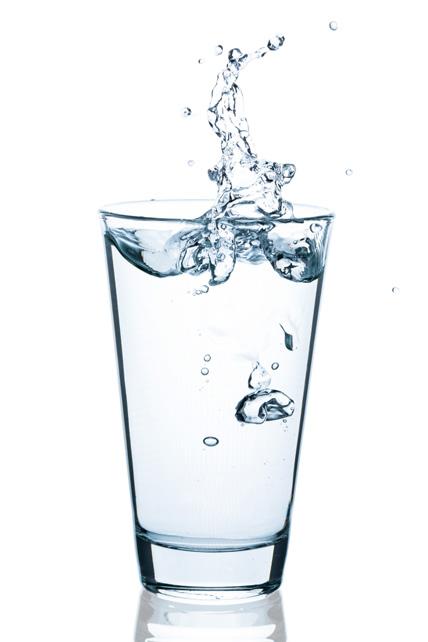
produce symptoms like fatigue, light headedness and even hunger. Dehydration can also contribute to brain fog, muscle cramps and decreased athletic performance.”
Higgins encourages patients to carry along a large water bottle to better track their fluid intake.
“If you wear a smart watch that reminds you to stand each hour, use this opportunity to also drink four to eight ounces of water or other fluids,” she said.
She added that as another helpful habit, drinking a glass of water
between each meal can increase hydration. Higgins suggests starting the day with a large glass of water, as people typically wake up mildly dehydrated.
How much water you need daily can vary. Factors that Higgins noted include: exercise, illness, weather conditions including both hot and cold temperature or low humidity, air travel, high altitudes, certain medications and life-stages like pregnancy and breastfeeding.
As a general rule for hydration, Laurel Sterling, registered dietitian with Carlson Labs in Canastota, quoted the US National Academies of Sciences, Engineering and Medicine, which states “an adequate daily fluid intake is about 15.5 cups of fluids a day for men and about 11.5 cups of fluids a day for women,” she said. “They stated that the fluid you consume doesn’t all need to come out of a glass because about 20% of your daily fluid intake can come from water that’s in food.”
Select firm potatoes, minus sprouts and cuts. Remove any green spots in skin or eyes. If your potato is green in more than a few spots, it’s better to toss as cooking doesn’t get rid of the toxins. Properly stored in a cool, dark place— away from onions which expedite spoiling—most potatoes last about a month.
about the same width and length as the beans and place in the bowl, along with the slivered red onion.
3. Make dressing: Stir together mustard, vinegar, garlic, salt, and pepper in a small bowl. Drizzle in the oil, whisking constantly to make a creamy dressing. Add a few dashes of Tabasco to boost flavor.
4. Mix it all up: Add dressing (some or all) to vegetables, give it a good stir, and serve. Note: leftover dressing tastes great on meat and meat alternatives.
Using an appropriate vessel can make a difference. A flip-top insulated travel mug can help keep beverages cold longer while on the go. Some people prefer a lidded mug with a straw or a coffee mug with a fun logo. The key is choosing what will keep a beverage with you at all times.
It’s easy to become bored with water. For this problem, add a splash of fruit juice, cucumber slices, mint or other produce to add flavor. Infuser pitchers can help make this easier, as they keep the items from floating in the pitcher while still adding flavor. Sparkling water that has no sweetener added can help hydrate. But it’s OK for people who truly struggle to hydrate to drink something sweetened, as that is better than dehydrating.
Don’t just wait until you feel thirsty to get a drink, said Julie Mellen registered dietitian nutritionist at Upstate Medical University.
By Barbara Pierce
Relationships aren’t easy today. They’re complicated and confusing. Many of us are inept at relationships.
“Relationships aren’t that simple anymore,” said social media influencer, 30-year-old Ankush Bahuguna of Mumbai, India, online. “We’re not prepared. We’re not prepared for the sacrifices, for the compromises, for the unconditional love. We’re not ready to invest all that it takes to make a relationship work. We want everything easy. We’re quitters. All it takes is a single hurdle to make us crumble to our feet. We don’t let our love grow, we let go before time.”
Our lifestyles have drastically changed and so have our relationships. Our relationships don’t last; we give up rather than resolve a conflict or deal with the hurdles that will be there.
Part of the problem, maybe even the biggest part, is that we bring huge expectations to our romantic relationships. We expect our partners to be many things, including a best friend, lover, co-parent and more. We expect our partners to support us, share our opinions and values and be in a good mood all the time.
The problem with expectations is when they aren’t met, people feel disappointed, frustrated or angry. This is especially true if the expectations are as unrealistic as these definitely are.
Don’t expect each other to be enough. On a logical level, most of us understand that one person can’t meet all our needs. So why do we
expect this from our partner?
Is that the answer? Just drop our expectations? No, there is more to the equation that makes a long-term relationship work with a spouse or partner in today’s world.
Cate Richardson-Henley, a psychotherapist in Oneonta, is an experienced psychotherapist, a licensed clinical social worker.
Richardson-Henley identified the characteristics that are needed to make a long-term relationship work:
• “Pay attention to what your partner is doing right,” said Richardson-Henley. “Notice and comment on these things. Make sure to pay attention to the small things.”
Focus on appreciating the strengths of your partner; accept their shortcomings. Accepting doesn’t mean being blind to the other’s shortcomings; it just means you stop fighting it. You work around it.
Letting others know what they’re doing right, what we appreciate about them, is powerful reinforcement. We’re all suckers for praise. We love to hear positive things about ourselves.
Praise and positive reinforcement are most effective for getting the other person to do what you want; not negative correction.
• “Communicate, communicate, communicate,” Richardson-Henley stressed. “When you’re discussing difficult issues, keep your voice low both in terms of decibels, loudness and in tone. Avoid yelling. When people hear yelling directed at them, they only hear that they are being
According to the Social Security Administration (SSA), the most popular baby names for 2023 were Olivia and Liam, for the fifth and seventh year in a row, respectively
Also, for the fifth consecutive year, Noah took the second slot for boys, and Emma for girls. Only one new name appeared in the Top 10 lists this year, with Mateo joining the boys for the first time.
Social media stars had a major influence on new parents in 2023.
The fastest rising girl’s name, Kaeli, went viral in 2023, rising a whopping 1,692 spots. Parents must have really smashed the ‘like’ button for YouTube and TikTok star Kaeli McEwen (also known as Kaile Mae), who routinely promotes a clean, tidy,

yelled at; they don’t hear the words that are being said. Avoid swearing, as this will both escalate the person swearing and the person being sweared at.”
Reddit.com newgeneration38 described his issues: “Communication was a hard lesson my wife and I had to learn…We ended up having the same arguments over and over because we sucked at how to have quality, healthy communication. We’d both get defensive and angry.
“When we finally started going to a good couple’s counselor, we learned a lot about how to properly communicate with each other and now our relationship is better than ever. There are quite a few easy to learn tactics for communicating effectively; things like gentle start-ups and repeating the message back to the person in your own words.
“Communicating is a way for you to work with your partner on figuring out what the real issue is, discussing both partners’ perspectives on it (which are bound to be different) and working together to find an agreeable solution.”
• Have sex/intimacy, Richardson-Henley added. “If it’s been a while, just start with kissing or extended foreplay.” Sex in a monogamous relationship increases your level of commitment and emotional connection with the other person. Expressing love through sex increases the likelihood of couples staying together. It strengthens the bond between partners and increases their longterm relationship satisfaction. As a

Richardson-Henley is a psychotherapist in Oneonta. “Pay attention to what your part-ner is doing right,” she says.
result, it’s positively associated with a lower divorce rate.
• Being committed: Deciding that you’re in it for the ‘long haul.’ Perhaps the biggest challenge in a relationship is drifting apart, not being committed to stick together. Being committed means you can both be who you are. When the obstacles come, when the tough times come, believing you will get through it and continue to be a couple. It means you hang in there.
and neutral-aesthetic lifestyle. On the boy’s side, trending in third place as the boy’s fastest riser, is Eiden — perhaps it was TikTok creator Wyatt Eiden’s 1.6 billion views and over 3 million followers that prompted this name’s meteoric rise.
Powerful names also proved very attractive to parents in 2023. Emryn made her debut in the Top 1000 baby names after moving up 1,287 spots — Ryn translates to “ruler,” so it is no shock to see Emryn becoming a leader amongst the girls. Meanwhile Chozen, the second fastest rising boy’s name, fought up to number 813 in 2023. The character Chozen becomes a hero in the latest season of the hit Netflix show, Cobra Kai – wax on, wax off!
Whitesboro studio provides a space where people feel comfortable to explore not only their physical health but also their mental and emotional well-being
By David L. Podos
In Whitesboro there sits an 8,000 plus square foot mansion.
Out on the front lawn, a large sign displays the name of the business inside: Move, Breathe, Live. The owner is Juliana Hardy and she is on a mission, a mission to help people become as healthy as possible.
Hardy was born in Kentucky, but moved to Delaware at an early age. As a young girl, she was a very active and anxious kid. She took this anxious energy and became involved in sports and eventually an athlete; swimming was something that she really enjoyed. But she said, rowing was her favorite sport which she began at the tender age of 12.
“Sports was a way for me to channel all this energy I had” Hardy said.
That energy ultimately propelled her to dedicate her life to helping others to maximize their health, physically, emotionally and spiritually.
In fact, Hardy refers to her business as a “one stop wellness center.”
Due to family circumstances and after moving across country and overseas, Hardy eventually found her way to the Mohawk Valley region where she took up shop to offer physical training. But her vision was much broader — she wanted to offer more services but needed a bigger place, and that’s when she found her current facility.
Today, Move, Breathe, Live is in the process of becoming the reality that she had envisioned many years ago.
“When I was in collage the idea that I would pursue an academic major in the field of medicine was a real thing for me. I was into health not sickness, but as life has its quirks and challenges, I actually moved into the role of being a mother, which I

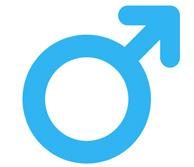

always wanted. So, after I received my degree in human development and human processing, thinking I would continue my academics and get a P.h.D., that never happened, but instead, I became a stay-at-home mom for 10 years, raising two beautiful daughters,” she said.
Hardy said she was always drawn to the alternative medical model in regards to health care, but also has a profound respect for medicine, science and human anatomy which she said when used appropriately, can play a pivotal role in health as well. She used her knowledge of science and human anatomy when she enrolled in massage school and became a licensed massage therapist while living at the time in Pennsylvania.
Hardy said her partner, who is in construction and a mason by trade, shared her dream and vision of moving to a bigger location.
“The vision was that the two of us would find a bigger building and that vision led us to this magnificent place that I am now in,” she said.
While she looks at total health from a wholistic viewpoint, Hardy started off basically working with the physical aspects of health, making the body strong and flexible.
“My roots always come from the physical but I was noticing especially as I aged, that the exercise as important as that was, it just was not enough,” she said. “So, I started to shift my perspective on health just a little and started to incorporate the mental health aspect as well as the spiritual, which I often refer to as the soul collective piece.”
Today her business offers a wide array of services and programs. Move Breathe Live has the fitness exercise, coordination and stability program for the general purpose of





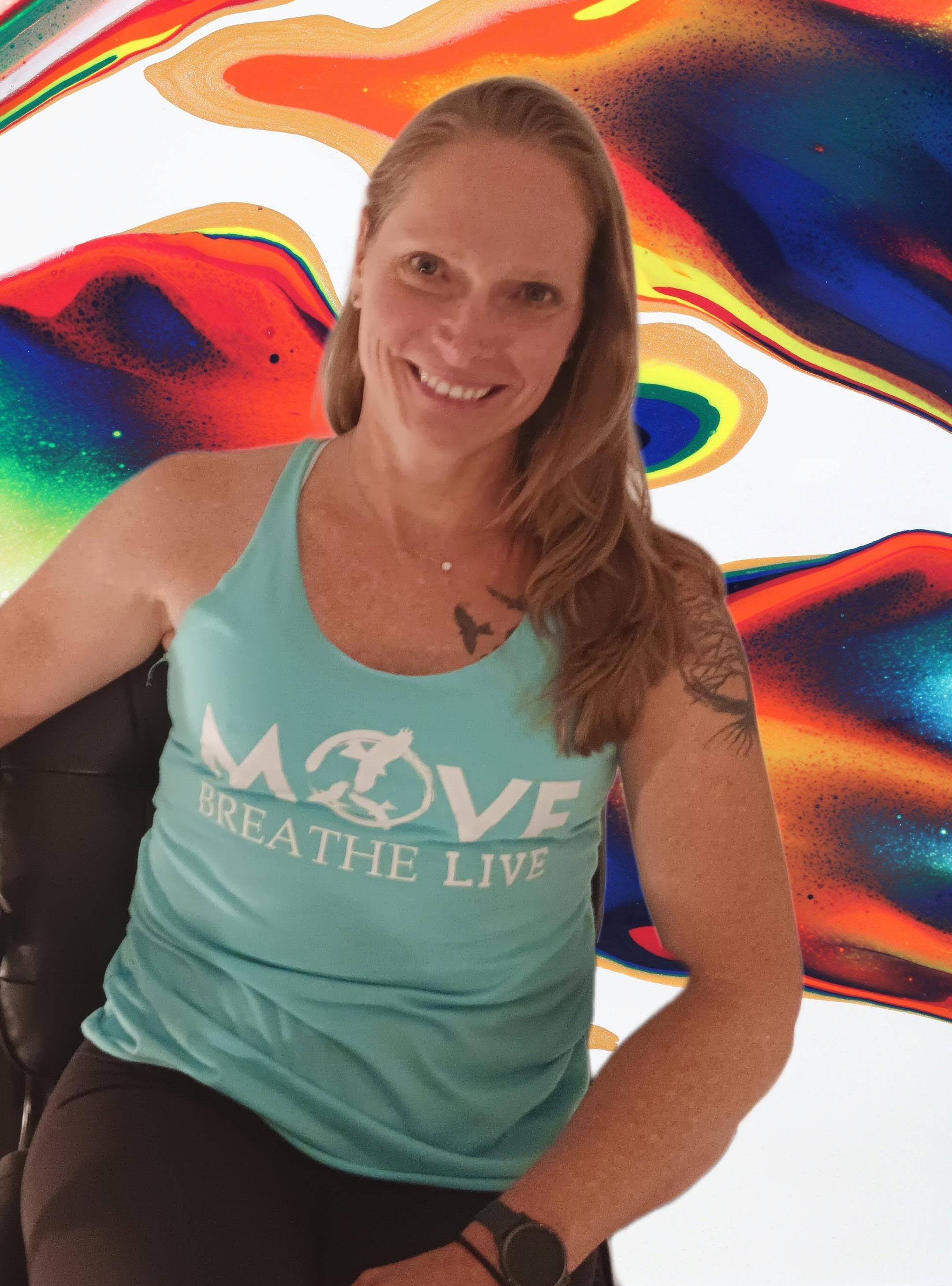
basic fitness. Hardy said she works with many women and men in the fitness program. She explained that these clients often tend to be a bit older, in their 40s 50s and 60s and who have been injured in other exercise programs or have never exercised before.
“I bring them in here where they feel comfortable trying out new things and in a safe way. We all need to feel safe physically but also mentally. A doctor in physical therapy is part of the staff and is a specialist in pelvic floor therapy,” she said.
The therapist is trained to do internal pelvic exams, focusing on hip pain and low back pain, for both men and women.
“We offer a yoga-meditation room and that room can be heated and when we do, we maintain the temperature between 90 and 95 degrees. I have two instructors that are certified yoga teachers. We offer
sound therapy, sound healing which is really unique. So, everything is vibration, we ourselves are vibration, the universe vibrates with sound,” she explained. “Our instructor brings in a number of gongs and other sound instruments. The participant lies down onto a blanket with a pillow and just relaxes. This kind of therapy just drops you to a whole other level of relaxation. People also sleep much better after attending a sound therapy session. All of these services are provided in a group session and for those who wish, private sessions are available.”
Hardy said that more work is being done on the upper floors including putting in offices for her instructors [and] the possibility of offering additional services.
By Barbara Pierce
Many health issues affect women differently from men and in ways that have an impact on diagnosis and care.
For instance, a heart attack in a woman presents different symptoms from that of a man, putting you at risk for misdiagnosis.
Doctors are becoming increasingly aware of how health issues in women call for different approaches that recognize and met their physiological differences. Men and women may have the same condition, but different symptoms and may require different treatment.
Here are six of the most common health concerns impacting women and what you can do to manage your risk:
“Heart disease is the number one killer of women,” said Heather Evans, executive director, American Heart Association, Mohawk Valley.

Heart disease in women remains underdiagnosed and undertreated.
“The most typical symptom of a heart attack is chest pain,” said Evans. Some type of chest pain, pressure or discomfort that lasts more than a few minutes or comes and goes.
Women are more likely than men to have symptoms that are not chest pain.
“Pain down an arm or in the jaw can be felt by men and women,” continued Evans. “Shortness of breath, back pain, shoulder pain and gastrointestinal distress are symptoms a woman has that can be a heart attack.”
Elsewhere in this issue of In Good Health you will find more details about heart disease in women.

More women die from stroke than men. Many of the risks for having a stroke are silent — like high cholesterol and high blood pressure. You’re just fine one minute, and the

next minute you’re in a hospital bed. (If you survive.)
Regarding the signs of a stroke, physician Scott Brehaut, medical director of The Stroke Center at MVHS and spokesperson for the American Heart Association, suggested paying attention to the following:
“Use the abbreviation ‘FAST’ to know the signs:
F: face drooping
A: arm weakness
S: slurred speech
T: time to call 911”
“The quicker you get treatment, the better your chances of not having any effects from the stroke,” he added.
Risk factors that put you at higher risk for a stroke include smoking, being older, being a woman, African American or Hispanic and having a close relative who has had a stroke.
Eighty percent of strokes can be prevented, according to the American Heart Association. Eat better, be more active, quit tobacco, get adequate sleep, manage weight, blood pressure and blood sugar.
3. Diabetes
Diabetes is a disease in which blood sugar (glucose) levels in your body are too high.
About one in every nine women in the U.S. has diabetes; it affects women and men in almost equal numbers. However, diabetes affects women differently than men.

and other complications may develop.
The ADA recommends several lifestyle changes to reduce the risk of developing Type 2 diabetes, including walking or doing any physical activity, following a healthy diet — such as the Mediterranean diet — limiting your portion sizes of carbohydrates like white bread, white rice and white pasta and avoiding sugar and sugary drinks.
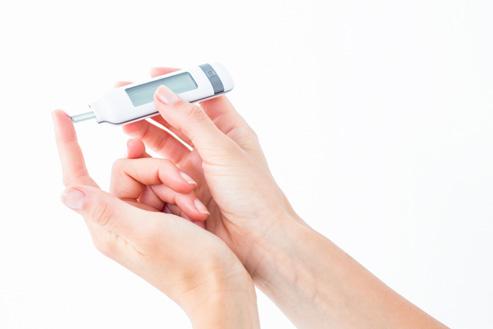
4. Maternal health issues
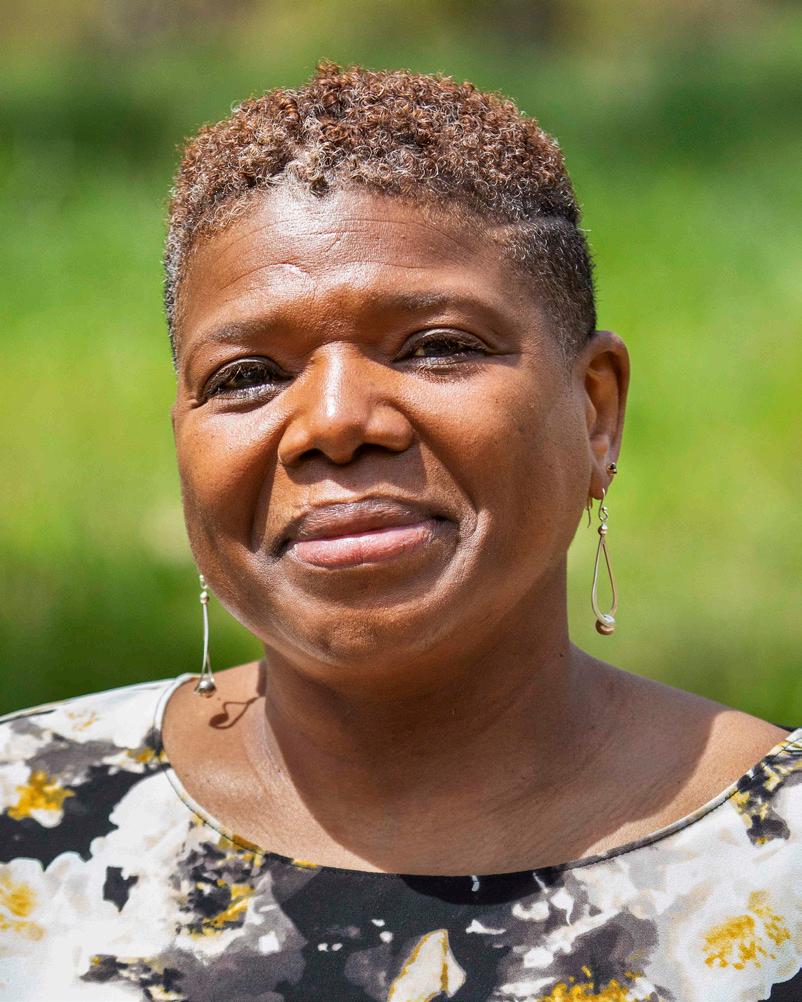
Compared to men, women with diabetes have a higher risk for heart disease, kidney disease, blindness, depression, yeast infections, urinary tract infections and vaginal dryness.
“Some of the common symptoms of diabetes are frequent urination, extreme thirst, extreme hunger, slow healing wounds, blurred vision and vaginal yeast infections,” said Janet Brown-Friday of the American Diabetes Association. “If you have any of these symptoms and are concerned about diabetes, ask your doctor to do blood testing to evaluate your blood glucose [sugar] level.”
Gestational diabetes is a condition that can occur during pregnancy in which your glucose level goes up
From iron-deficiency anemia to high blood pressure, the changes a woman experiences during pregnancy can impact her health.

Preconception care is important, whether or not you have medical conditions, experts advise. If you have a high-risk condition, like a major cardiac disorder or neurological issues, discuss your plan with your physician, especially if you take medication. Also, do not conceive immediately after weight loss surgery.
During pregnancy, make sure you have adequate nutrition and get the appropriate immunizations. Continue to exercise as you do normally; consult your health care provider if you have questions.

Urinary tract infections occur when germs get into the urethra and start to multiply. Symptoms of a UTI include frequent urination, pain or burning when urinating and cloudy urine. While a UTI can go away on its own, a physician can prescribe antibiotics if necessary. If UTIs become a recurring problem, tests can reveal if the urinary tract is normal.
Protect your risks by getting screened with mammograms (usually by age 40), being aware of how your breasts look and feel is an important part of early detection; share any changes with your health care professional.

There’s no sure way to prevent breast cancer. But there are things you can do that might lower your risk, including limiting alcohol, staying at a healthy weight and being physically active.
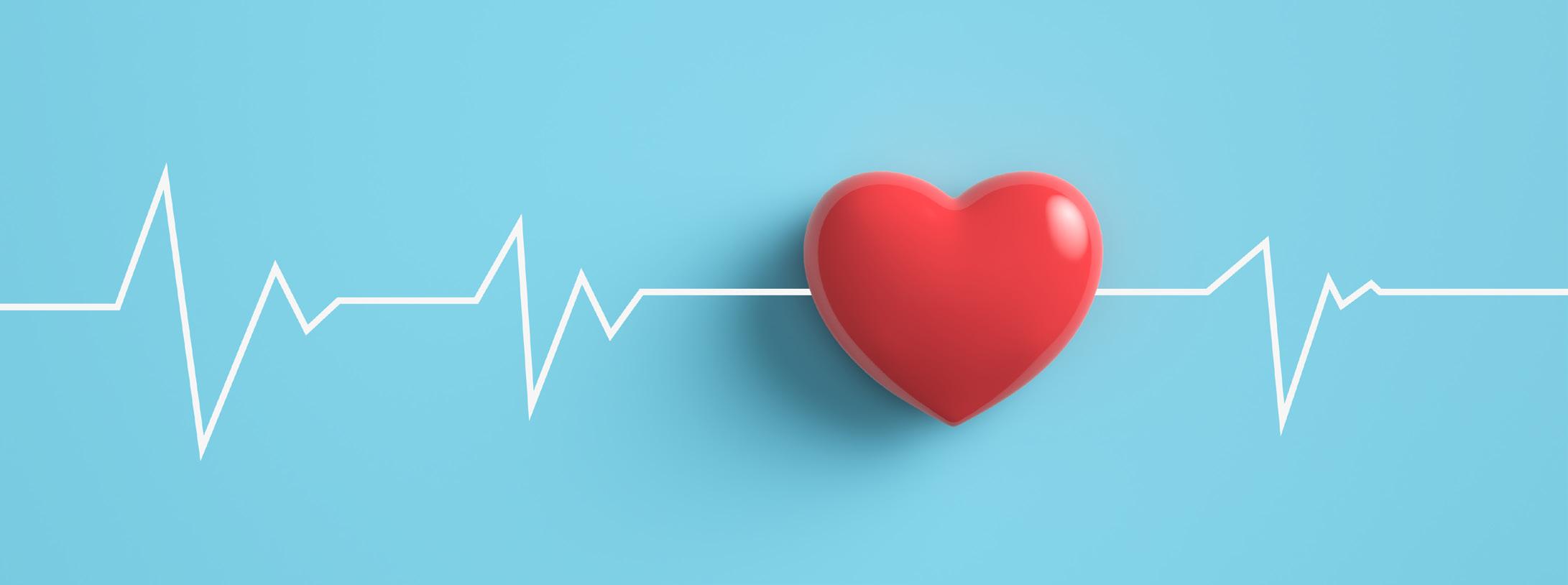
Surprisingly it’s not cancer. It’s heart disease — and heart disease in women is not like heart disease in men
By Barbara Pierce
Though important progress has been made in women’s health care over the past few decades, significant challenges still remain. Heart disease is a leading challenge in women’s health.
“Heart disease is the number one killer of women, causing more deaths than the top eight cancers combined,” said Heather Evans, executive director at American Heart Association in Mohawk Valley.
Heart disease is a general term that describes a range of conditions that affect the heart. It’s also called cardiovascular disease, which means diseases that affect the heart or blood vessels including coronary heart disease (clogged arteries), which can cause heart attacks, stroke, heart failure and peripheral artery disease. It is the leading cause of death for both men and women.
Heart disease happens gradually over time, while a heart attack occurs suddenly and is an emergency. Stroke, also an emergency, is a condition in which the brain can’t get enough blood flow because one or more blood vessels leading to the brain are blocked or have burst.
Heart disease in women remains under diagnosed and undertreated, said the CDC. There is the persistent
and incorrect attitude that heart disease predominantly affects men. Treatment for women is regularly delayed and their symptoms are often dismissed or misdiagnosed.
Evans agrees with this: “Far too often, we hear that what a woman is experiencing is probably just a panic attack. Alarmingly, more younger women are experiencing cardiovascular issues, including stroke,” she said.
Despite the many medical advancements over the last several decades, some doctors still downplay women’s symptoms.
“Physicians are misled, particularly toward mental health alternative diagnoses for women,” stated the CDC, following its research on the misdiagnosis of heart disease in women.
“Physicians should be aware of the potential for psychological symptoms to erroneously take a central role in the diagnosis of younger women,” the CDC advised, evidence of the challenge that heart disease in women faces. Misdiagnosing a heart attack or stroke in a woman is common, especially for younger women. This means appropriate treatment does not happen.
Women need to become more
aware of the signs, symptoms and risk factors of heart disease in women as they experience a heart attack differently than men. It’s important to know the difference.
“The most typical symptom of a heart attack is chest pain,” said Evans.
Some type of chest pain, pressure or discomfort that lasts more than a few minutes or comes and goes.
But chest pain is not always severe or even the most noticeable symptom in women. Women often describe the pain as pressure or tightness. Some have a heart attack without chest pain.
Women are more likely than men to have symptoms that are not chest pain.
“Pain down an arm or in the jaw can be felt by men and women,” continued Evans. “Shortness of breath, back pain, shoulder pain and gastrointestinal distress are symptoms a woman has that can be a heart attack.”
“A symptom to really watch out for is fatigue,” she added. “Pay attention if it’s a different kind of fatigue than you’re used to. Know your body so you can recognize when something is different.”
Other symptoms of a heart attack include nausea or vomiting, sweating or heartburn, a feeling of indigestion.
“The number one risk factor is smoking,” said Evans. “If you smoke, quit. Work with your doctor to make a plan to quit tobacco.”
If you don’t smoke, don’t start.

High blood pressure is a major risk factor for heart disease. It is often underdiagnosed in women and many women do not have it under control. Black women are more likely to have high blood pressure than white women.
Know your blood pressure, as uncontrolled high blood pressure can lead to heart disease, stroke, kidney failure and dementia. High blood pressure has no symptoms. It’s important to check your blood pressure regularly and discuss elevated readings with your health care professional.
Other risk factors including being overweight, high cholesterol, stress and being sedentary, added Evans.
“The American Heart Association created ‘Life’s Essential 8,’ eight factors that help people live their optimal life,” said Evans. “They are not smoking; maintaining a healthy weight; keeping your blood pressure in a good range; having good cholesterol levels; getting enough sleep; having a healthy blood sugar level; exercising; and eating better. You can take a health assessment and see what you need to improve at mylifecheck.heart.org.”
If you have symptoms of a heart attack or think you’re having one, call for emergency medical help immediately. Don’t drive yourself to the emergency room unless you have no other options.
Active in Utica, the American Heart Association’s Go Red for Women is a national movement to raise awareness about heart disease in women.
New AI can help detect breast cancer that is spreading to other parts of the body, without the need for biopsies, a new study finds.
The AI analyzes MRI scans to detect the presence of cancer cells in the lymph nodes under the arms, researchers said.
In clinical practice, the AI could help avoid 51% of unnecessary surgical biopsies to test lymph nodes for cancer, while correctly identifying 95% of patients whose breast cancer had spread, results showed.
Most breast cancer deaths are due to cancer that’s spread elsewhere, and the cancer typically first spreads to an armpit lymph node, explained lead researcher Basak Dogan, a physician who serves as director of breast imaging research at UT Southwestern Medical Center.
Finding cancer that’s spread to a lymph node “is critical in guiding treatment decisions, but traditional imaging techniques alone do not have enough sensitivity” to effectively detect it, Dogan said in a medical center news release.
Patients with benign findings from MRI exams or needle biopsies often must undergo surgical lymph node biopsy anyway, because those tests can miss a good number of cancer cells that have spread past the breast, Dogan said.
Researchers trained the AI by feeding the program MRI scans from 350 newly diagnosed breast cancer patients known to have cancer in their lymph nodes.
Testing showed that the newly developed AI was significantly better at identifying these patients than
human doctors using MRI or ultrasound, researchers reported recently in the journal Radiology: Imaging Cancer.
“That’s an important advancement because surgical biopsies have side effects and risks, despite having a low probability of a positive result confirming the presence of cancer cells,” Dogan explained. “Improving our ability to rule out [cancer cells in lymph nodes] during a routine MRI using this model can reduce that risk while enhancing clinical outcomes.”
By Barbara Pierce
I’ve been around this life a good many years.
I’ve learned a lot about love, relationships, people and how to stay relatively sane and optimistic.
I’ve lived with husbands, partners and alone.
I loved my career; I worked as an administrator in a large nonprofit organization, then became a psychotherapist, learning much from my clients. I’ve continued to be involved with many things after I retired, leading workshops, groups, writing, volunteering. I’ve lived in many cities, towns, even on a boat in Mexico. I’ve been fortunate to have many wonderful women as friends.
Here are some of the things I’ve learned that made my life happy and fulfilled. See if any have worked for you.
• Do something you love, something you’re passionate about. Our passions bring sizzle to our lives. If you love your career as I did, you’re fortunate. If there’s any way you can make a living by following your passion, find a way. If not, discover something you’re passionate about and follow it furiously outside of your work.
It’s all about having a purpose in life, something that makes you want to get out of bed in the morning and get going. Your passion, your purpose — however you think of it — is both an inner urge and what you’re skilled at. It will change over time.
Your purpose is based on doing what you love. Usually what you love to do is also what you do best.
Discovering your purpose may be something you need to look within and unlock. Listen to your heart. Your purpose will be something that you’re good at and that you care deeply about.
• Take risks based on what you have to gain, not what you have to lose. If you win, you’ll be happy; if you lose, you’ll have learned something. I’ve pushed myself to step out of my comfort zone often, taking risks, sometimes making mistakes.
Research has found that we tend to focus more on what might go wrong — what we might lose or sacrifice by taking a risk — than what might go right. We often misjudge and over-estimate the likelihood of a wrong outcome occurring. Yet the reality is that the risk of something not working out is often not nearly as high as we estimate and the odds of it working out well are often far better.
• Seek out adventures. Adventures are the spice of life! “Everything will kill you so choose something fun!” said a poster on my wall. “Never stop exploring!” said another. Adventures make us feel more fully awake, alive and free. They give us the excitement of exploration, discovery and surprise.
• Tough and maybe even tragic things will happen to you. You don’t get a choice of what happens to you. But you do get a choice on how you respond. Viewing the tough things that happen to you as challenges rather than problems helps. A challenge is
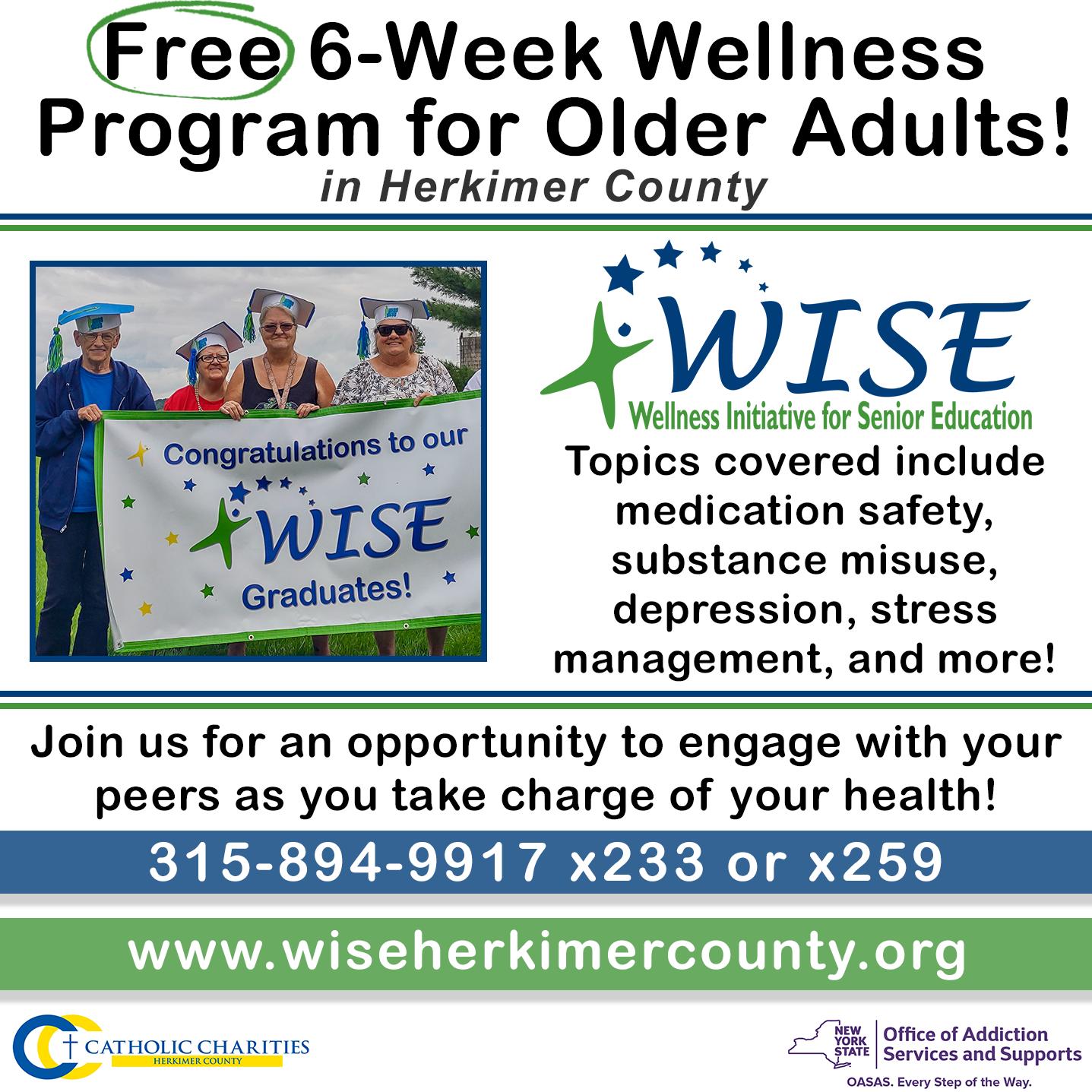
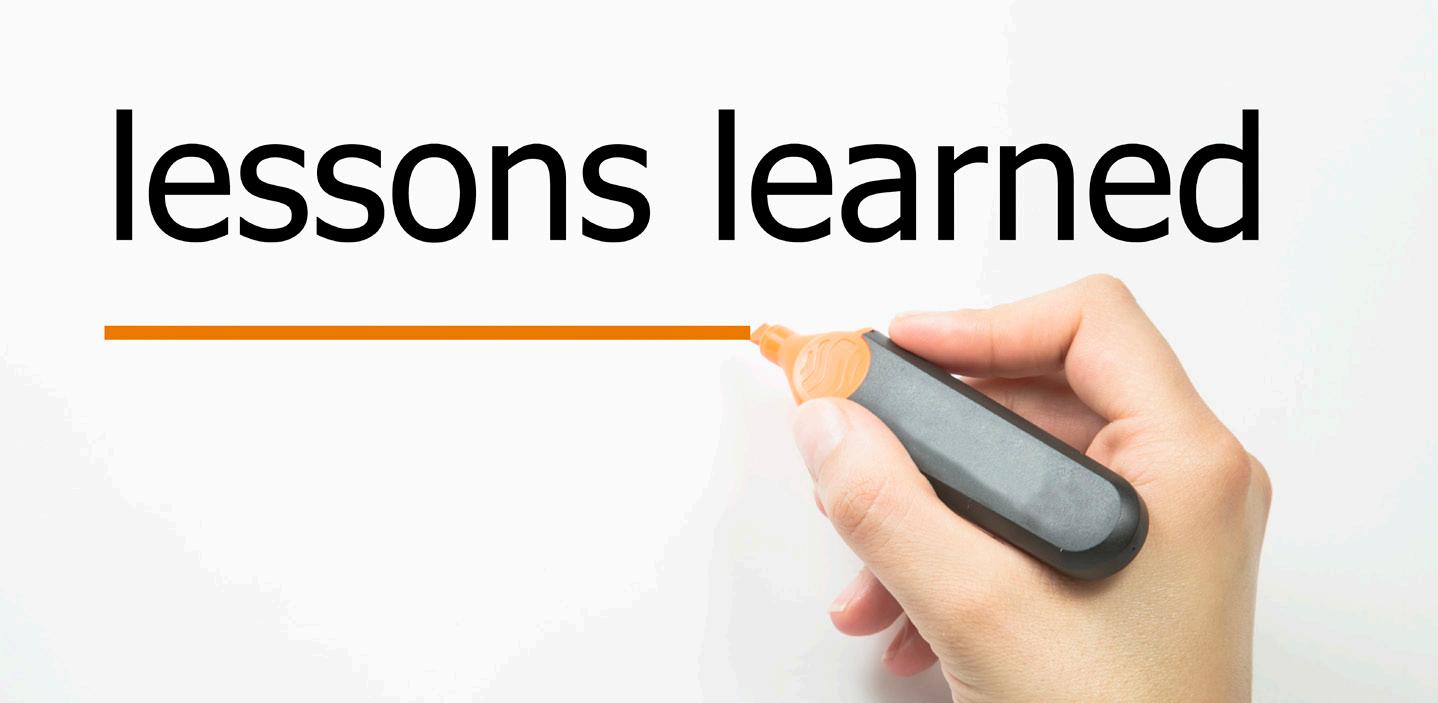
something to be solved, to be overcome, like an obstacle, a bump in the road. A problem is difficult to deal with, a wall in the road.
When dealing with something terrible, you must take one small step at a time, learning with each step. You must believe in yourself and your ability to get to the other side. You endure maybe just for one day at a time or even one hour at a time. You endure because you hope that things will be better tomorrow. And sometimes they are.
• Make new friends, but keep the old. The most valuable thing you can do to stay healthy and happy is connecting with others. Research has found that meaningful social connections play a huge role in our physical and emotional well-being. It’s been proven that stable, healthy friendships are crucial for our well-being. I remember fondly the many women who have helped me on my journey through life.
One of my regrets is that I haven’t maintained these friendships. One of us moved and the contacts became less and less frequent. Or I got involved with a new man and let my friend fall away for him. I lost a lot by letting that happen. It’s hard
to make new friends, but I’ve done it time and time again because I believe it’s so essential.
Developing and maintaining a good friendship does take effort. It’s definitely worth that effort. Remember that friendships don’t grow without work. When you meet someone intriguing; be bold and suggest a next step, like coffee or lunch. A simple overture can go a long way. You never know where it could lead. Many of us hit a wall here. I certainly do. But if you don’t take action, you won’t form any new relationships. That’s what worked for me. I’d love to hear what’s worked for you!

Barbara Pierce is a retired licensed clinical social worker with many years of experience helping people. If you would like to purchase a copy of her book, “When You Come to the Edge: Aging” or if you have questions for her, contact her at barbarapierce06@yahoo.com.













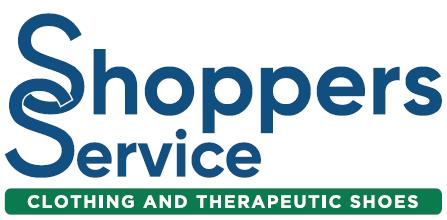










By Deborah Dittner
Herbs have many health benefits and have been used medicinally for centuries.
There are many herbs to choose from especially as more and more garden centers have widened their selection for your growing pleasure.
Herbs can be used in cooking (oregano, basil), teas (dandelion, tulsi), salves (calendula, St. John’s Wort), syrups (peppermint, elderberry), tinctures (echinacea, burdock), and cleaning products (thyme, lavender) to name a few.
So, where do you begin?
Planting an herb garden is a great starting point. If you have the space right outside the kitchen door or are able to use planters or pots on the steps entering your kitchen you will be more likely to use and experiment with them.
• Peppermint adds wonderful flavor and is easy to grow requiring little maintenance. Use peppermint for cold or flu-like symptoms as it is known to open sinuses, clear the head, break fevers, calm an upset stomach and decrease pain. I recommend planting peppermint (or any mint for that matter) separately or in a pot as they grow and spread quickly.
• Echinacea is anti-microbial and aids in stimulating the immune system as tinctures, salves and tea. Used
with colds and flu, skin conditions including infected wounds, acne, boils and abscesses and toothaches. Echinacea also helps prevent weeds from spreading.
• Cold and Flu Tea — aids in the relief of fever, infection and chills
- 2 teaspoon echinacea root
- 2 teaspoon peppermint leaf
- 2 teaspoon yarrow flower
- 1 teaspoon elderflower and berry
- 1 teaspoon ginger root
Steep for a minimum of 10-20 minutes in hot water.
• Calendula has beautiful golden flowers and has been known for its topical healing benefits for rashes, acne, bug bites, eczema and minor scratches. As a tea, detoxification will be stimulated and help to move lymphatic fluids.
• Yarrow aids in healing wounds, decreasing fevers and aiding the cardiovascular system. Yarrow can be used as a tea, tincture, salve and poultice. It is easy to grow and resilient.
• Fight Infection Tea
- 2 teaspoon calendula flower
- 2 teaspoon echinacea root
- 2 teaspoon elderberry
- 2 teaspoonlemongrass
- 1 teaspoon thyme
- 1 teaspoon yarrow leaf and flower
Steep for a minimum of 10-20 minutes in hot water.

By Barbara Pierce
If the benefits of physical activity could be taken in a pill, everyone would be on it.
So many studies show that moving improves every aspect of our health. It’s one of the best things we can do for ourselves. It helps us sleep better, our brains work better; it reduces feelings of anxiety and depression, lowers the risk of several diseases, reduces pain and helps us live longer, better lives.
Even though we’re aware of all these benefits, it’s a struggle for most of us to get motivated to move at all.
“It’s a battle against human nature,” said certified personal trainer Genaro Scampone, based in New Hartford.
Probably that’s because for most of human existence, people had to be physically active to carry out the basic functions of life, such as finding or growing food. We evolved to tolerate a high level of activity, but also to gravitate toward rest whenever
• Lavender creates a calming effect aiding in peaceful sleep. As a tincture, lavender can help in the recovery of mild to moderate depression. Lavender can be made into teas, salves, oils, and creams used as a muscle relaxant and aiding in the healing of wounds. Lavender also attracts pollinators aiding in happy bees, butterflies and hummingbirds.
Chamomile has beautiful small white petals with a calming aroma. Chamomile aids an upset stomach, pink eye, relaxes tense muscles and is soothing as a bedtime tea. Also great for colicky babies.
- Chamomile Lavender Bath
- 1 tablespoon dried lavender
- 1 cup dried chamomile flowers
Place the dried flowers in a large pot. Boil ½ - 1 gallon water and pour over the mixture. Steep covered at least 20 minutes to overnight. Strain into bathtub or foot bath and add water to achieve desired temperature. Immerse your body or feet and enjoy as long as you’d like.
Dandelion is well-known for aiding in liver detoxification. All the parts of a dandelion can be used medicinally. The fresh young spring green leaves make a tasty pesto, added to salads, or lightly steamed. The roots can be dried and used for teas. Make sure the dandelions you use have not been sprayed with any pesticides or herbicides — you want pure dandelions.
- Dandelion Pesto
always come up with a reason to put off exercising.
If you don’t exercise, the results won’t be good, said Scampone. “Your body won’t be able to sustain muscle fiber. Your nervous system will deteriorate. They’ll be a systemic atrophy. You’ll lose your ability to balance, cardio will decline, your nervous system will decline.”
Loosing muscle strength and endurance is not good. Your immune system may not work at all well.
How to trick our brains into moving more, given the fact it’s a battle against human nature?
- 2-3 cups fresh, young dandelion leaves
- 2-4 crushed cloves of garlic
- ½ cup olive oil
- ¼ cup parmesan cheese
- Pinch of Himalayan pink salt
- 1 tablespoon lemon juice
- ¼ cup ground pine nut or walnuts
Blend oil, garlic and salt with half the dandelion leaves then add the remaining leaves and blend well to a good consistency. Add remaining ingredients and blend well.
Once you start growing herbs, you will find there are many uses. Once you start growing herbs, you will find more reasons to grow other herbs as well. Experiment and learn which herbs help you and your family to heal naturally from a variety of conditions, aid the body, boost the immune system, and lift the spirits. Plus, they taste fantastic!
The information provided is for education purposes only and is in no way intended to replace the advice of your health care professional.
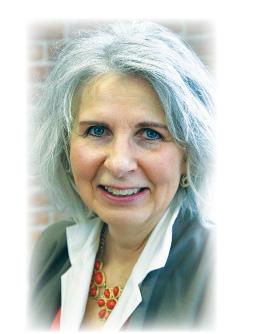
Dittner is a family nurse practitioner and health consultant. Her mission is to transform as many individuals as possible through nutrition and lifestyle changes. www. debdittner.com
feels weak and tired.
“You don’t want to feel pain,” he stressed. “If you feel pain, stop what you’re doing and move to another exercise. You don’t want to hurt yourself.”
Our brain loves things that are tailored for us. Personal trainers, like Scampone who tailors his coaching to the needs of the individual, often make for better results. And there are apps that do this.
possible to conserve our energy for when we had to move, according to biologists. We’re wired to be sedentary.
As a society, we no longer move much in the course of our daily lives, but the evolutionary instinct to conserve energy remains. That voice in our head that can always find an excuse not to exercise is completely normal and natural according to experts.
Our brains don’t want us to exercise.
Here in the U.S., we’re more inactive than ever. According to the American Heart Association, sedentary jobs have increased 83% over the past several years. Then, during our leisure time, most of us are still sitting, using a computer or phone, watching TV or playing video games.
With long days working, we don’t have energy left over to even do simple things that help us move more, much less work out. We can
Scampone, who has offered oneon-one personal training for several years, said “I take the approach that less is more. When I work with someone, I program the exercise frequency to something sustainable. Instead of fighting against human nature, reduce it to what’s doable. Maybe one or two times per week. See if you can do this for a year, then it will become a routine.”
Start small: one or two times a week if that’s all you’re really motivated to do. Keep doing it for a year. Then you’ll feel something is missing if you stop.
What workouts are best?
“I start with muscles,” said Scampone. “Our muscles have a systemic effect on our bodies.”
In his workouts, he uses the ‘big five’ to start with: One for the lower body, two push-ups for the lower body and two push-ups for the upper body. Specific exercises include leg press pull down, chest press, row, shoulder press. These use all your muscles.
“When you’re exercising, you want to feel fatigue of your muscles,” he added.
Fatigue is when your muscle
Another way to trick your brain is by making it a game. Your brain likes games, especially if it’s hard to predict or offers intermittent rewards.
Making a commitment to yourself also helps.
“I never ask myself if I want to walk today, because I can always think of a reason not to,” said 93-year-old Grace Chicken of Port Charlotte, Florida. “I just get out there and do it without thinking about it.”
Another way to trick your brain into working out is to reward yourself after you finish. Whatever you’d enjoy more, dinner, watching a good movie, whatever. It’s a way to motivate yourself.
Also, listening to your favorite music as you work out makes it more enjoyable.
Another way to trick your brain into moving more is reframing what counts as exercise. If doing workouts isn’t for you, take time to walk around your neighborhood, pull weeds, in your garden, dance in your living room while you watch TV or go for a bike ride. At work, stand up while you talk on the phone, use the stairs instead of the elevator.
It’s all about moving and finding ways to move that are enjoyable.
By Barbara Pierce
If you’ve watched TV lately, you’ve seen the commercials: “It’s started — the side-hug,” says a mother as her young son gives her an awkward half hug. Then there’s the father dropping off his school-age daughters. “As the ‘Dad Cab,’” he says, “it’s my cue to help protect them.”
These Merck ads remind parents of school-aged children to get them vaccinated to protect against cancers caused by the HPV infection.
1.What is an HPV infection?
HPV (human papillomavirus) is a common virus that can lead to certain types of cancer later in life, said physician Manika Suryadevara, pediatric infectious disease specialist at SUNY Upstate Medical University.
HPV is the most frequent sexually transmitted infection in the U.S. — even more common than herpes or gonorrhea. It is generally spread through sexual contact and direct skin-to-skin contact; the most common route of transmission is penetrative sex.
“More than 100 types of HPV exist, with more than 40 affecting the genital area,” Suryadevara added. “The virus can cause genital warts, throat cancer, cervical cancer and other genital cancers.”
It can cause cancers of the vagina and vulva in women, the penis in men, the anus and the back of the
throat for both men and women.
Cancer usually takes years, even decades, to develop after a person gets HPV. There is no way to know who will develop cancer or other health problems from HPV.
HPV vaccination can prevent more than 90% of cancers that are caused by HPV. That’s why HPV vaccines work best when given at age 11–12 years, before contact with the HPV virus.
2.Who is at risk for having HPV?
All sexually active men and women are at risk of having a HPV infection. About 85% of people will get an HPV infection in their lifetime, according to the CDC. The more partners you have had, the more your risk increases.
There are both low-risk and high-risk types of HPV. Usually, your immune system gets rid of a low-risk HPV infection naturally, within two years, without causing any health problems. However, for some people, high-risk HPV infections can stay in the body for many years, even decades. These long-lasting, high-risk types are of concern because they are the types that can lead to cancer.
The body’s immune system may be able to clear the virus or the virus may quietly persist for years before developing a cancer. The risk for
Free service is available 24/7 and provides access to trained crisis counselors through call, text, and chat
In times of emotional distress and mental health crises, having immediate access to support can be a lifesaver.
The 988 Suicide & Crisis Lifeline is a significant step forward in providing that crucial support. This easy-to-remember three-digit number offers immediate assistance to those experiencing mental health challenges, emotional distress or substance use issues.
The 988 Lifeline is a free service available 24/7, providing access to trained crisis counselors through call, text, and chat. It supports individuals who are suicidal, experiencing a mental health or substance use
crisis, or any emotional distress. This service is also available to those concerned about someone in need of crisis support.
One of the key strengths of the 988 Lifeline is its integration with local crisis centers, ensuring that callers receive relevant and effective support. In Central New York, Contact Community Services plays a pivotal role in supporting the 988 Lifeline, providing comprehensive crisis intervention services to ensure that individuals receive timely and appropriate care.
Since its inception, 988 has answered over 25,000 calls across Central New York, demonstrating

cancer increases if your body cannot fight off the virus for some reason and it stays in your system.
Physician Allison Roy of SUNY Upstate Medical Center said: “Sometimes the body clears the infection, but we know that the longer the HPV stays around in the cervical cells, the more likely it is to cause dysplastic changes or the precancerous changes that then go on to develop a cancer.”
3.Is there a test to determine whether I have HPV?
As the changes in your body that could indicate you have the high-risk type don’t usually have any symptoms, therefore testing is how to detect a high-risk type of HVP before it becomes cancerous.
The Pap test and the HPV test determine whether you are at risk, says the CDC. Start getting Pap tests at age 21. Both tests can be done in your health provider’s office.
It is recommended that women aged 21-65 have a Pap test every three years. Women aged 30 and older can consider Pap testing every five years if the procedure is combined with testing for HPV.
4.Should I be concerned if I have HPV?
“If you get a positive HPV test, your physician has detected one or more high risk strains of the virus. Our experts say the most important
the high demand for mental health services in our region. Each call represents a person reaching out for help, a life potentially saved. The volume of calls highlights the importance of having a dedicated mental health hotline and underscores the critical need for such services. Notably, less than 1% of the calls required police assistance, emphasizing the effectiveness of trained counselors in de-escalating situations.
The service is inclusive, open to individuals of all ages, genders, ethnicities, races, religions, sexual orientations and socioeconomic statuses. Specialized lines are available for Veterans, LGBTQIA+ individuals, and Spanish speakers. Phone services are provided in English and Spanish, with translation available in over 150 additional languages. Chat and text services are currently available only in English.
When you contact 988, you are connected to a local crisis center based on your area code. If the local center is busy, your call will
thing to know if you have HPV is that the risk of cancer is very small but should be taken seriously. Don’t panic and don’t ignore it,” said physician Lois Ramondetta of the MD Anderson Cancer Center online.
“HPV is the most common sexually transmitted disease, but most of the time it isn’t a big deal,” said PlannedParenthood.org online.
5.Who should get the HPV vaccine — and when?
Children should receive the vaccine by age 12 because at that age they probably have not yet been exposed to any types of HPV.
“Pediatricians offer the HPV vaccine to adolescents along with tetanus, meningitis and other standard vaccines,” Suryadevara said. “By vaccinating boys and girls, you are protecting both genders from developing HPV-associated cancers later in life. Without the protection of immunization, many individuals will acquire the HPV infection at some point.”
Most insurance companies cover the cost and there are financial assistance programs that may be able to help you if you do not have insurance.
“Be sure the kids are vaccinated!” Suryadevara said.
be redirected to a national backup center. Trained counselors provide support for various mental health issues, including suicidal thoughts, mental health or substance use crises, and emotional distress. The service is designed to be accessible to everyone, regardless of their background or circumstances.
Mental health issues have become increasingly prevalent, especially following the COVID-19 pandemic. The isolation, stress, and uncertainty of the past few years have significantly impacted many people’s mental well-being. The 988 Lifeline provides a crucial resource for those struggling to cope, aiming to reduce the stigma around seeking help for mental health issues and encouraging individuals to reach out when they need it most.
If you or someone you know is struggling, don’t hesitate to reach out to 988 or chat online at 988lifeline.org – because no one should have to face a crisis alone.
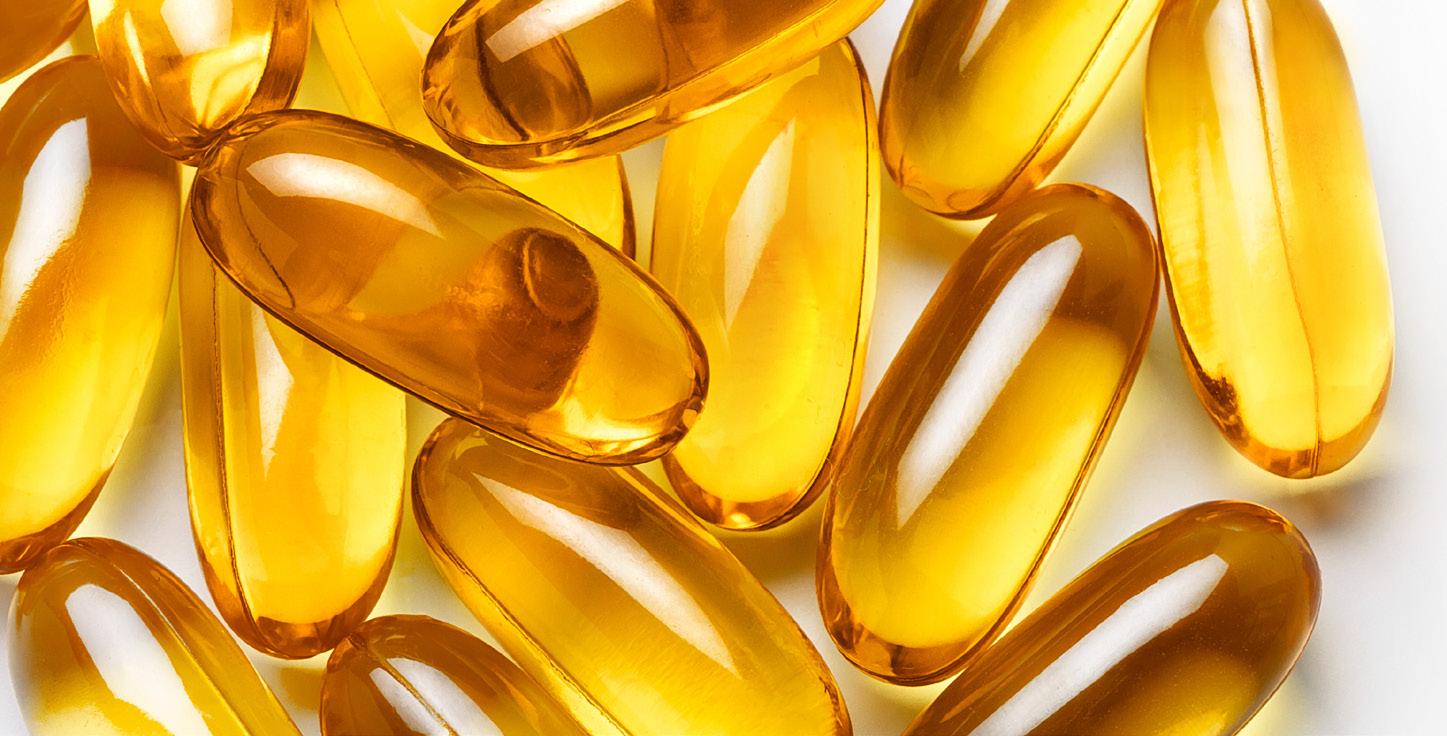
olks regularly taking fish oil supplements might not be helping their health as much as they might think, a new study suggests.
Regular use of fish oil supplements could increase the risk of firsttime heart disease and stroke among those with good heart health, new research suggests.
However, the long-term study also found that fish oil can help those whose hearts are already in trouble, potentially slowing the progression of heart problems and lowering the risk of death.
Healthy people taking fish oil supplements had a 13% increased risk of developing atrial fibrillation, a heart rhythm problem that increases the risk of heart attack and stroke, researchers found.
They also had a 5% increased risk of stroke, results show.
“Our findings suggest caution in the use of fish oil supplements for primary prevention because of the uncertain cardiovascular benefits and adverse effects,” wrote the research team led by Hualiang Lin, an epidemiologist with Sun Yat-Sen University in Guangzhou, China.
But in those with existing heart disease, regular use of fish oil lowered risk of a heart attack due to atrial fibrillation by 15%, and the risk of heart failure leading to death by 9%.
“Regular use of fish oil supplements might have different roles in the progression of cardiovascular disease,” based on whether someone already has heart problems, the researchers suggested.
“Overall, I would say that the days where people just go to the store and buy buckets of fish oil pills to keep them well should be over, but fish oil may still have a role in people who are already sick,” physician Andrew Freeman, director of cardiovascular prevention and wellness at National Jewish Health in Denver,
told CNN.
When it comes to fish oil, “the devil is in the details,” neurologist Richard Isaacson, director of research at the Institute for Neurodegenerative Diseases in Boca Raton, Florida, told CNN.
“First, we recommend testing for omega-3 fatty acid levels — there are finger-prick tests you can buy online which are accurate — and then you should continue to test. You don’t want to take fish oil if you don’t need it,” he stressed.
Isaacson recommended getting omega-3 fatty acids from food and added that sardines and wildcaught salmon are the best sources. Farm-raised salmon is not the best choice, he said, because of impurities in the water in which they are raised.
Fish oil remains a rich source of omega 3 fatty acids, which are thought to help both heart and brain health. As such, health experts recommend that people eat oily fish like salmon at least once a week or use fish oil supplements, researchers said in background notes.
For the study, the team analyzed data from nearly 416,000 people aged 40 to 69 participating in a large-scale health study in the United Kingdom. These people were surveyed between 2006 and 2010 to gather basic health information, including their regular diet and supplement use.
Nearly a third (32%) said they regularly use fish oil supplements.
The research team then tracked the health of participants for an average of nearly 12 years, watching to see how many died, developed heart problems or suffered a stroke.
The findings were published May 21 in the journal BMJ Medicine.
“Further studies are needed” to figure out why fish oil might not be helpful for healthy people, but useful in people with heart problems, the researchers concluded in a journal news release.
We’re looking for dependable people to help us distribute copies of In Good Health: MV’s Healthcare Newspaper, in offices and other high-traffic locations in the Herkimer Countyregion.
Work only one or two days a month during office hours (9 to 5). Compensation: $15/h plus 30 cents per mile.
Call Allison at 315-749-7070 for more information.

very July 4, we celebrate our nation’s independence. For nearly 90 years, our programs have helped create financial independence for millions of hardworking people. We have useful online resources like the Social Security Statement (statement) and our benefits estimator tool that helps people not yet receiving benefits. The statement shows the benefits that you and your family may be eligible for and provides personalized fact sheets tailored to your age and earnings situation. The benefits estimator tool allows you to get estimates based on different ages. These online tools can help you better prepare for your retirement.
If you’re not receiving benefits
You can get the most out of your online experience if you have a personal my Social Security account. You can:
• Request a replacement Social Security card.
• Get estimates for spouse’s benefits.
• Get your statement instantly.
• Get proof that you do not receive benefits.
Q.: I haven’t received my Social Security Statement in the mail the last few years. Will I ever get one again?
A.: We currently mail Social Security statements to workers age 60 and over who aren’t receiving Social Security benefits and do not yet have a personal my Social Security account. We mail the statements three months prior to your birthday. Anyone can access their statement online if they have a personal my Social Security account. We encourage you to create your own account at www. ssa.gov/myaccount and check your Statement at your convenience.
Q.: I am receiving Social Security retirement benefits and I recently went back to work. Do I have to pay Social Security (FICA) taxes on my income?
A.: Yes. By law, your employer must withhold FICA taxes from your paycheck. Although you are retired, you do receive credit for those new earnings. Each year Social Security automatically credits the new earnings. If your new earnings are higher than in any earlier year used to calculate your current benefit, your monthly benefit could increase. For more information, visit www.ssa. gov or call us at 1-800-772-1213 (TTY 1-800-325-0778).
• Check your application status.
If you’re receiving benefits
You can use your personal my Social Security account to:
• Request a replacement Social Security card.
• Get an instant benefit verification letter.
• Start or change your direct deposit. (Social Security beneficiaries only)
• Change your address. (Social Security beneficiaries only)
• Get a replacement SSA-1099 or SSA-1042S instantly for tax season.
• Opt out of mailed notices for those available online.
You can create your personal my Social Security account at www.ssa. gov/myaccount.
Our blog at blog.ssa.gov features news and information about our programs and services. You can subscribe and get notified each time we post a new blog so you can stay informed. From the blog, you can also connect with us on Facebook, X, LinkedIn, Instagram, and YouTube.
With so many services and helpful information available online, we are here for you when you need us. Learn more at www.ssa.gov.
Q.: My doctor said he thinks I have a disability. Who decides if I meet the requirements for Social Security disability benefits?
A.: We first will review your application to make sure you meet some basic requirements for Social Security disability benefits, such as whether you worked enough years to be eligible for benefits. Then we will send your application to the disability determination services office in your state, often called the “DDS” or “state agency.” Your state agency completes the disability decision for us. Doctors and disability specialists in the state agency ask your doctors for information about your condition. They consider all the facts in your case. They use the medical evidence from your doctors and hospitals, clinics, or institutions where you have been treated and all other information.
The state agency staff may need more medical information before they can decide if you have a disability. If more information is not available from your current medical sources, the state agency may ask you to go for a special examination. We prefer to ask your own doctor, but sometimes the exam may have to be done by someone else. Social Security will pay for the exam and for some of the related travel costs. Learn more at www.ssa.gov/ disability.
By Jim Miller
Dear Savvy Senior,
How can I tell if the health info on a website is trustworthy? I usually do a Google search on a symptom, drug or health condition when I want to research something, but with so much information out there I’m not sure what I can trust.
Skeptical Sal
Dear Sal,
You’re wise to be skeptical! There’s an overwhelming amount of health advice on the internet today and it can be hard to tell what’s credible. To help you sort through the online clutter and locate reliable, trustworthy health information, here are a few tips to follow, along with some top-rated sites you can turn to with confidence.
Savvy Searching
First, know that Google or Bing is not always the best place to start a search. You’ll increase your odds of finding reliable health information if you begin with websites run by government agencies (identified by URLs ending in .gov), medical associations (often .org) or academic institutions (.edu).
Commercial websites (usually ending in .com), such as drug or insurance companies who may be trying to sell you their products, are usually not the most trustworthy options. To find out who’s sponsoring a site and where the information came from, click on the “About Us” tab on the site’s home page.
Also note that good health and medical information changes all the time so check the date that information was published to make sure it’s current.
Some other areas you need be wary of include online symptom checkers and artificial intelligence (AI) tools.
While symptom checkers do offer potential diagnoses that could fit your set of symptoms, they are often inaccurate and tend to err on the side of caution, says physician Ateev Mehrotra, a professor of health care policy at Harvard Medical School. AI tools, like ChatGPT, can also be wrong or generate false but scientific sounding information.
You also need to be cautious about using medical information from social media, online forums or YouTube. Comments in these places may sound authoritative even if the authors have no medical training or expertise.
While there are many excellent

websites that provide reliable health and medical information, one of the best all-purpose sites that’s recommended by Consumer Reports for researching symptoms and conditions is MedlinePlus (medlineplus.gov).
A service of the National Library of Medicine, the world’s largest medical library, and part of the National Institutes of Health, MedlinePlus provides high-quality, trustworthy health and wellness information that’s easy to understand and free of advertising.
Here are a few additional websites, recommended by the Medical Library Association and others, to help you find reliable information on specific diseases, conditions and treatments.
• Cancer: National Cancer Institute (cancer.gov), American Cancer Society (cancer.org) and National Comprehensive Cancer Network (nccn.org).
• Heart disease: American Heart Association (americanheart.org), National Heart, Lung and Blood Institute (nhlbi.nih.gov).
• Diabetes: American Diabetes Association (diabetes.org).
• Alzheimer’s disease: Alzheimer’s Association (alz.org) and Alzheimers. gov.
• Public health and vaccines: Center for Disease Control and Prevention (cdc.gov).
• Alternative medicine: National Center for Complementary and Integrative Health (nccih.nih.gov) and the National Institutes of Health’s Office of Dietary Supplements (ods. od.nih.gov).
Any research you do online before seeing a doctor, be sure to save or print your findings out on paper, including the site you got your information from, so you can review it together. Exceptional
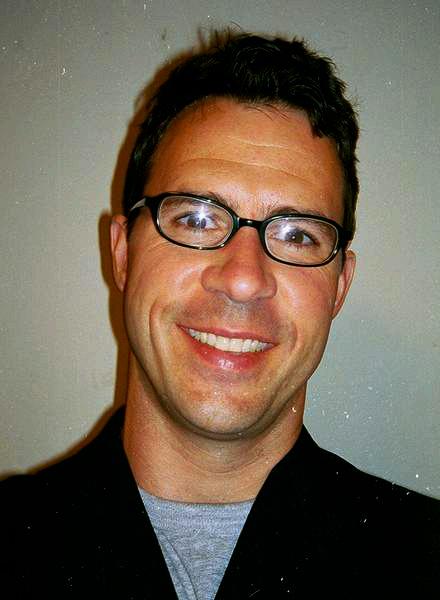

The most advanced orthopedics program and the latest in joint replacement robotics can be found right here in
Areas of specialty include:
• Total Joints
• Upper Extremities
• Spine
• Sports Medicine
• Robotic Surgery
• Trauma
To make an appointment, please call (315) 630-3523.
Send your senior questions to: Savvy Senior, P.O. Box 5443, Norman, OK 73070, or visit SavvySenior. org. Jim Miller is a contributor to the NBC Today show and author of “The Savvy Senior” book. Get the Upstate Advantage for your career. As the region’s largest employer Upstate o ers more jobs and more variety, with great bene ts. We are growing — join us.


Physician William Gaetano has

William
joined Slocum-Dickson Medical Group’s urgent care in New Harford. He joins the group with over 10 years in emer gency medicine. Gaetano delivers prompt medical care for individuals over 2 years of age with minor (non-life-threatening) acute health problems. He provides treatment for basic illnesses and conditions in cluding cough, cold, hyperglycemia, asthma, headaches, and more.
of three Upstate New York chapters of the Alzheimer’s Association, including Central New York, Rochester – Finger Lakes region and Western New York.
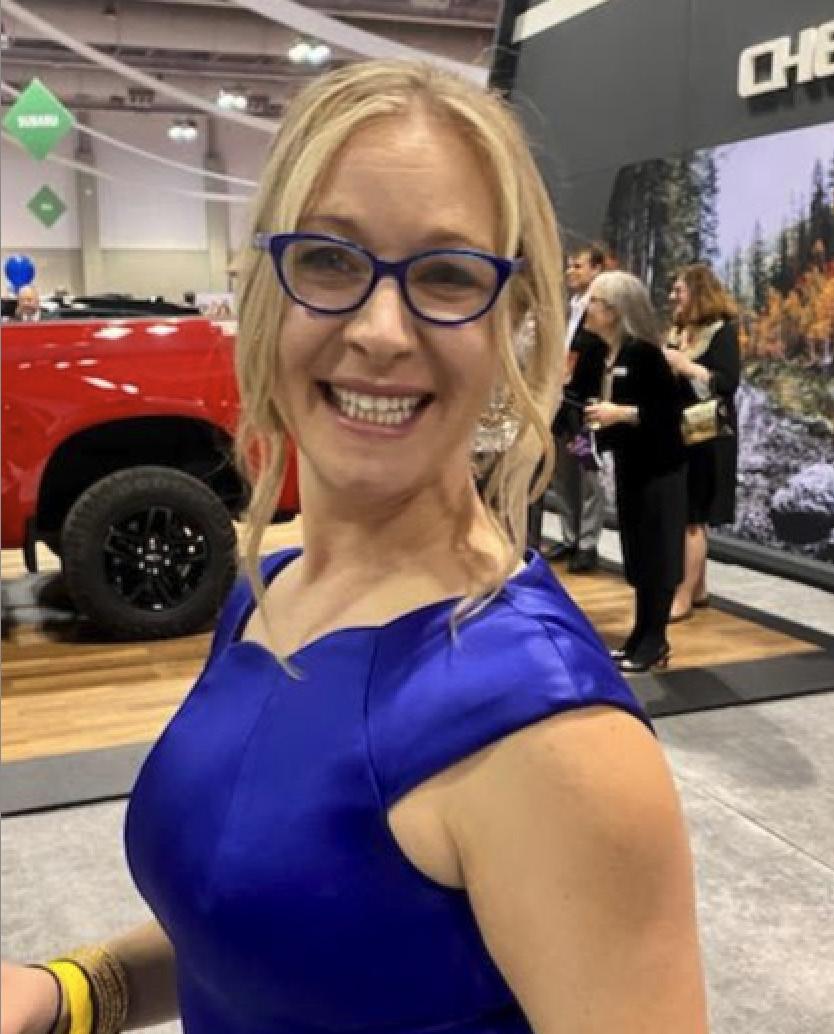
Gaetano completed a family medicine residency at St. Elizabeth’s Hospital and obtained his medical degree from St. George’s University School of Medicine along with a Master of Science in Public Health. He earned a Bachelor of Arts from Siena College.
Christine Corbett of Manlius has been named vice president for development for the Upstate New York Chapters of the Alzheimer’s Association.
In this newly created position, Corbett is responsible for the fundraising and development operations
Her primary focus is the Walk to
End Alzheimer’s, the world’s largest event to raise awareness and funds for Alzheimer’s care, support and research programs. Fourteen walks are held throughout the Upstate New York Chapters each fall, with a combined 2024 revenue goal of $2.2 million.
In addition, Corbett will supervise development staff in all three chapters, manage corporate sponsorships and partnerships, cultivate major and planned gifts and oversee special events.
“We are so pleased to have Christine on our team,” says Kate Flannery, executive director for Upstate New York Chapters. “Her passion for her work, her knowledge of fundraising and the development process, and her vast network of local individuals and companies make her the perfect individual for this vital role.”
Corbett most recently served as director of philanthropy for David’s Refuge, a nonprofit organization providing respite, resources and support to families of children with special needs or life-threatening medical conditions.
In her six years at David’s Refuge, revenue was nearly tripled through engaging dedicated and hardworking volunteers and philanthropists. During that time, she also successfully managed special events,
corporate partnerships, leadership giving and grant funding.
Prior to David’s Refuge, Corbett served as director of development for Make-A- Wish Central New York and in development positions at the Hospice Foundation and United Way of Central New York.
Antonio (Tony) Vitagliano has

been appointed as the regional president of Excellus BlueCross BlueShield’s Utica market. Excellus BCBS is the largest nonprofit health insurer in Upstate New York. With this promotion, Vitagliano will be expanding his current role as senior vice president of provider network engagement.
“Over his 30-plus year career at Excellus BlueCross BlueShield, Tony has built strong relationships with providers, members, employers, brokers and leaders in the Utica area,” said Jim Reed, CEO and president of Excellus BCBS. “As a life-long resident of the Mohawk Valley, Tony brings with him the knowledge and appreciation of the local community he will serve.”
In his expanded role as regional president, he will combine his leadership of provider networks with the additional responsibility of supporting and maintaining business, quality health and sales in the Mohawk
Valley and the North Country. There are approximately 500 Excellus BCBS employees who work in the Utica area.
While at Excellus BCBS, Vitagliano has held positions in finance and marketing as well as successive roles as regional vice president of Network Management in the Utica and Central New York regions, and vice president of network management and operations.
Vitagliano serves the Utica region in a variety of ways, including as a board member of the CNY Vision Alliance. He has previously served on several local boards and associations including vice chairperson of the Mohawk Valley Chamber of Commerce; chairperson of the United Way of the Mohawk Valley, Young Leaders United; president of the New Hartford Youth Hockey Association; as a board member of the Childrens Museum and Central New York Regional Health Information Organization (RHIO). He is also a recipient of the Mohawk Valley 40 Under 40 Award and a Fellow, Academy of Healthcare Management.
He is a current member of the Princeton University Alumni Schools Committee and contributed to the New York State North Country Health System Redesign Committee, Reimagine NY Commission, Medicaid redesign.
He earned a Bachelor of Science in engineering from Princeton University and a Master of Business Administration from the University of Rochester’s Simon School of Business.
Having been born and raised in the Mohawk Valley, Vitagliano returned to the area after completing his higher education. He and his wife, Karyn, reside in New Hartford, and have three adult children.

When

Along with the Blue Cross Blue Shield Association, we’re committed to reducing racial and ethnic maternal health disparities by 50% in 5 years. Join us and take action today:
Childbirth complications are 46% higher among Black mothers. Anyone can help by learning more about this urgent issue. (Tip: start with our podcast episode)1

Every expecting mother should receive unbiased, high-quality care. Examine your own implicit biases. What might need to change?
Support policies and organizations that increase access to affordable, culturally sensitive maternal healthcare. Let the expecting mothers in your life know they have a voice, are being heard, AND believed.
Get the facts in our episode “Reducing Racial Disparities in Maternal Health” with Dr. Cuyler at ExcellusBCBS.com/ podcast or wherever you listen to podcasts.

What could weight loss surgery mean for you? For Kate Rutherford, losing 150 pounds after weight loss surgery meant getting on the floor to play with her young children, going skydiving and living an active life. Because it’s about more than weight loss. It’s about reducing your risk for serious conditions and regaining the confidence to take on every day. Trust the team at Crouse Health to start your weight loss journey. Begin the process at crouse.org/weightloss or call 315-470-8974
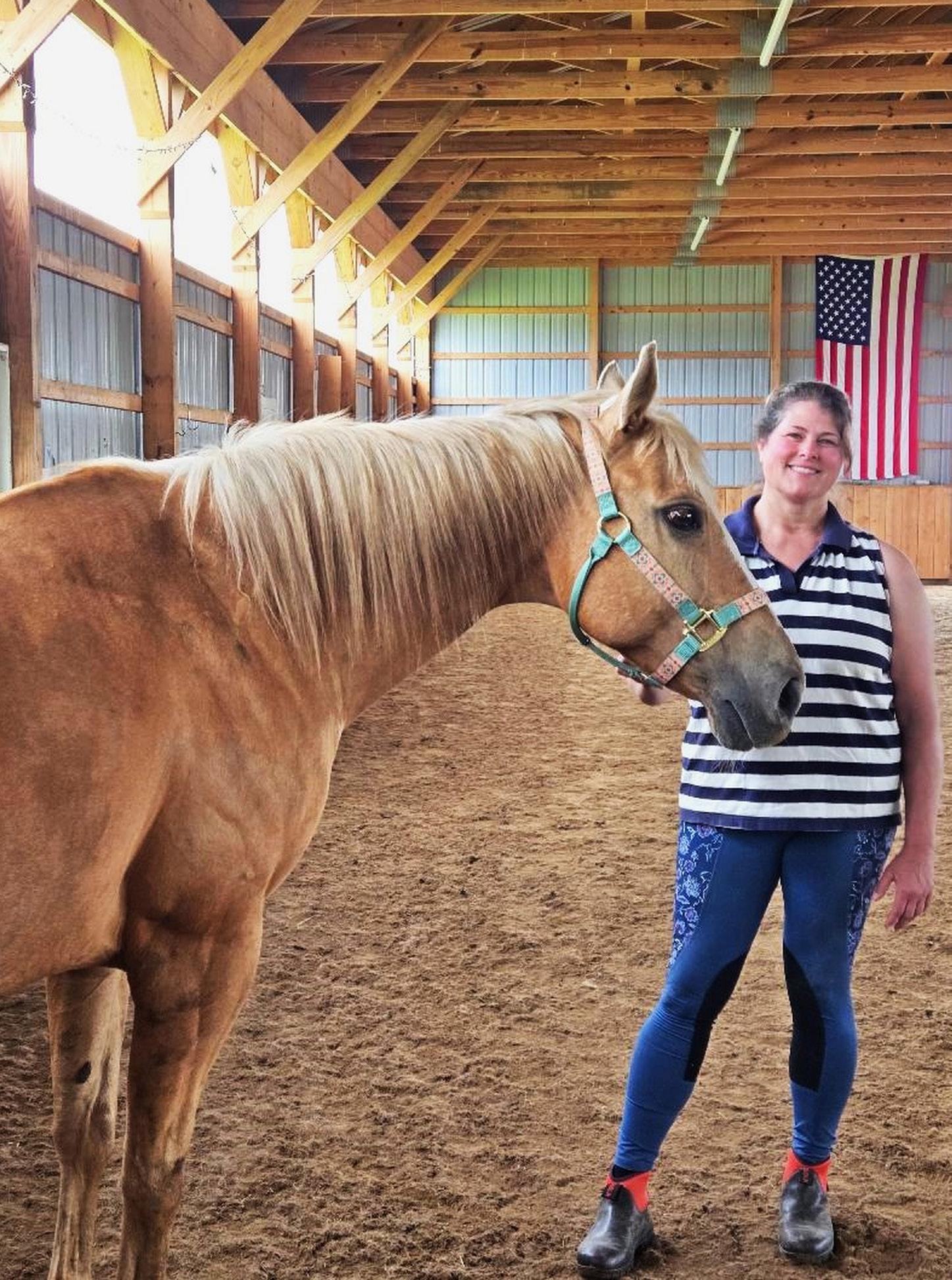
By Joe Sarnicola
Horse or equine therapy has a documented history dating back almost twenty-five hundred years. But its modern history as a rehabilitative practice may have begun in the 1950s.
In 1952, Liz Hartel won a silver medal in horseback riding at the Olympics, even though she was partially paralyzed from polio. Her interaction with her horse and her ability to overcome her disabilities caught the attention of medical professionals.
Therapeutic riding soon became a new tool to help people with a ride
range of physical and mental disabilities, first in Europe and then in the United States.
In 1969 the North American Riding for the Handicapped Association was founded. It is now known as the Professional Association of Therapeutic Horsemanship International or PATH, with more than 6,000 members.
Proof of the success of equine therapy can be found in the Central New York region at Healing H’Arts Equestrian Center in Union Springs, Gentle Hill Farms in Tully and ARISE at the Farm in Chittenango.
Madison County Public Health partnered with ARISE at the Farm to create a communication board at the inclusive and accessible playground in Chittenango.
A communication board is a tool that can help non speaking people communicate with others.
Communication boards display a selection of photos or symbols to help people with limited language skills express themselves.
The communication board tailored for this playground displays the alphabet, numbers, greetings,
On a sunny day in May, a group from Unity House of Cayuga County visited Healing H’Arts. Unity House provides services and support for people who are in recovery, coping with a mental illness or diagnosed with a developmental disability.
They were met by Kirsta Malone, the CEO of the organization, and members of her staff and volunteers.
Mary Ellen Perry, the president of the Healing H’Arts board, was also on hand when the clients arrived.
“It’s so important to get these individuals out in the public and the community so they are not just stuck at home,” she said.
The group was led into the arena, a space inside a large barn for games and other activities. Many of the game pieces were oversized such as giant stackable checkers.
“We like to supersize all our games. My background is occupational therapy, which gave me a better grasp of the developmental stages people go through. My philosophy is play and this all-inclusive program encompasses any type of need. Mental health has been a strong focus lately,” Malone explained.
The barn was built in 2017 and the footing material (interior riding surface) is made of silica sand and synthetic fibers coated in a specialized wax which was purchased from IGK Equestrian in Auburn. This makes the product dust free and requires only minimal maintenance. Malone described it as her “$40,000 carpet.”
Among the volunteers are six Mennonite teen girls. “They wanted horse experience, which allows me to teach them that horses are valued members of our team, rather than just a means for transportation,” Malone said.
The animal team at Healing H’Arts is made of 11 horses, a donkey and two dogs. All the horses are accessible to the clients. Sassy, a 28-year-old pony, was the first therapy animal in the stable. Malone started by taking her on visits to schools. She recounted a story where she worked with a teen boy who had a traumatic brain injury.
“I was flabbergasted by the positive change in him. After he graduated, I was disappointed there were no programs available to him. Even so, he is now living independently,” she said.
That experience inspired her to create a horse therapy program that eventually became Healing H’Arts, a nonprofit organization that does not board any horses as a revenue source. All their money comes from
Proof of the success of equine therapy can be found at several organizations in the Central New York region.
donations. When they were deciding on a name for the organization, they wanted one that reflected their devotion to therapy, compassion and the arts. They are also seeking a PATH -certified therapist who would be a good fit for their mission.
• For more information about Healing H’Arts, 1131 Kings Corners Road, Union Springs, visit www.healingharts.com or call 315-730-4339.
ARISE at the Farm in Chittenango is a 77-acre working horse farm that serves individuals with disabilities in the Central New York region, ranging from therapeutic horse riding to school-break programming. They even have an accessible fishing pond and playground. They recently ran a series called the Memory Care Corral, which is an equine assisted program for individuals with memory loss and their caregivers. According to Rebecca Schafer, the inclusive recreation coordinator, “The program has been going well and we will offer it again in the fall. We also offer adaptive riding.”
• For more information about ARISE at the Farm, 1972 New Boston St, Chittenango, call 315-687-6727, visit www. ariseinc.org/services or email Rebecca. schafer@ariseinc.org
From the Ground Up, a service of Gentle Hill Farm, 1238 North Road, Tully, describes their equine therapy program as “holistic,” with the belief that equine assisted services can help individuals improve balance, coordination, focus, memory, impulse control and more.
• For more information about this program call 315-238-7014, visit ww.ftguhorses.org, or email contactftgu@gmail.com
gestures, activities, emotions and playground and farm-related pictures.
The communication board is funded by the New York State Department of Health’s Children and Youth with Special Health Care Needs grant.
The board located in the accessible playground at ARISE at the Farm was donated by the Madison County Children and Youth with Special Health Care Needs program, which offers support to children from birth through age 21 and their families.
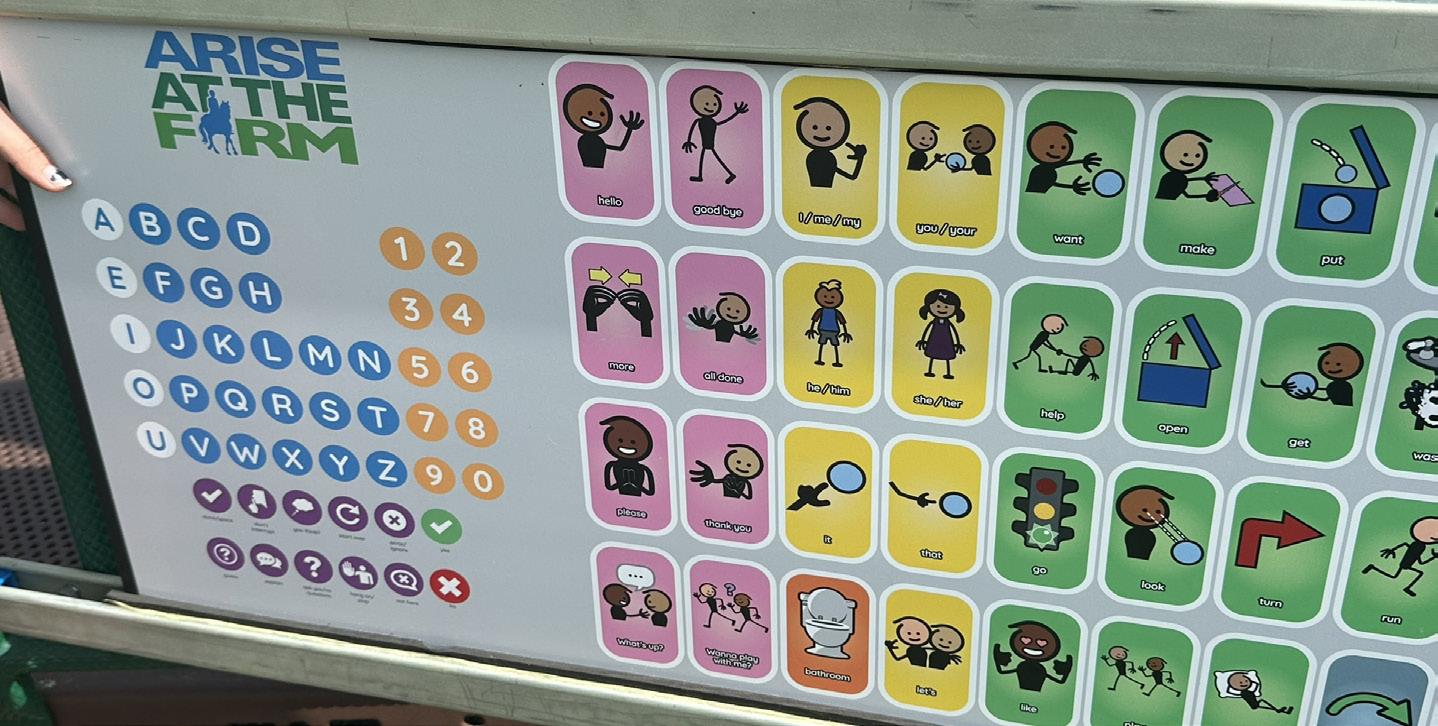
CYSHCN staff can provide information and assist with information and referrals for families of children with disabilities and/or suspected disabilities.